SIMM
Sciences Interdisciplinary Monthly Meeting
The Ray P. Authement College of Sciences is pleased to host The Sciences Interdisciplinary Monthly Meeting (SIMM). This seminar series is designed to foster interaction among faculty and students within the academic units of the college. Interested parties from outside the college are encouraged to participate as well. Please join us and learn what your colleagues in other units are up to and how you might profitably interact with them.
Spring 2025
The many events in celebration of the fiftieth anniversary of the founding of the Ray P. Authement College of Sciences have prevented normal SIMM presentations this semester. However, we do have a very sepecial guest lecture scheduled for April.
Special Anniversary Lecture - April 2025

Celestial Seedlings: Plant Life in the Final Frontier
John Z. Kiss
Professor, Provost, and Senior VP for Academic Affairs
Florida Institute of Technology
4:00
14 April 2025
Oliver Hall auditorium (room 112)
Reception to follow
Due to space limitations this event is by invitation only.
As we begin to draw the curtain on our celebration of the fiftieth anniversary of the founding of the Ray P. Authement College of Sciences, we are pleased to host a special lecture by Dr. John Z. Kiss. Dr. John Z. Kiss, L3 Endowed Professor, Provost, and Senior Vice President for Academic Affairs at the Florida Institute of Technology, will speak on Celestial Seedlings: Plant Life in the Final Frontier. The lecture which is scheduled for 4:00 on Monday 14 April 2025 in the Oliver Hall auditorium (room 112) will be followed by a reception in the Oliver Hall lobby.
John Z. Kiss is a plant space biologist. He has served as a Principal Investigator on eight spaceflight projects that have involved NASA as well as the European Space Agency and Roscosmos. His recent research focuses on how gravity and light responses influence each other in plants in order to better understand the cellular signaling mechanisms involved in plant tropisms—directed plant movements in response to external stimuli. His group also is interested in the role of red light as an environmental cue capable of counteracting the adverse effects of the lack of a gravity vector during spaceflight on plant growth and development. Learning how plants adapt to weightlessness and low-gravity environments is important for determining the ability of vegetation to provide a complete, sustainable, dependable and economical means for human life support in space. The ability of plants to provide a source of food and to recycle carbon dioxide into breathable oxygen may prove critical for astronauts who will live in space for months at a time. In addition, in the long term, this new knowledge of how plants grow and develop at a molecular level should lead to significant advances in agriculture on Earth.
Due to space limitations this event is by invitation only. However, if you are a college alumna or alumnus and have not received an invitation please contact us at sciences@louisiana.edu.
Fall 2024
SIMM - November 2024

Studying Carbon Cycling and Biodiversity in Coastal Ecosystems from Space
Bingqing Liu
School of Geosciences
UL Lafayette
3:30 - 5:00
12 November 2024
Oliver Hall auditorium (room 112)
Abstract
The bio-geo-optically complex and spatio-temporally dynamic nature of coastal systems play a pivotal role in the global carbon cycle. This introduces substantial uncertainties in quantifying whether coastal oceans act as net sinks or sources of atmospheric carbon-based greenhouse gases. With the ability to measure various properties of land and ocean surfaces at high spatial, temporal, and spectral resolutions, remote sensing serves as a powerful tool to provide key information for a global and sustained monitoring of coastal carbon ecosystems. It plays a crucial role in examining primary producers, such as phytoplankton assemblages, and blue carbon habitats, seagrass meadows, which are significant in sequestering carbon in the aquatic realm. Nevertheless, the intrinsic complexity of coastal ocean systems presents considerable challenges to remote sensing, necessitating the development of sophisticated algorithms to fully harness its potential. In this presentation, I will share my recent advancements in remote sensing algorithms for coastal waters, and their applications in studying crucial aspects of the coastal carbon cycle within the global carbon budget. This includes phytoplankton community dynamics, dissolved organic carbon concentration and fluxes, and the role of seagrass as a natural solution in mitigating climate change.
About the speaker

Bingqing Liu, PhD, is an Assistant Professor in our School of Geosciences. Her research navigates the realms of satellite oceanography and marine optics to study the intricacies of the coastal carbon cycle, the biodiversity of aquatic ecosystems, (e.g., phytoplankton and seagrass) and their responses to meteorological/climatic changes and anthropogenic stressors. Prior to her current role at UL Lafayette, she served as the Deputy Director for the RESTORE Act Center of Excellence for Louisiana (LA-COE), a position she assumed after earning her PhD in Oceanography and Coastal Sciences from Louisiana State University.
Spring 2024
SIMM - February 2024
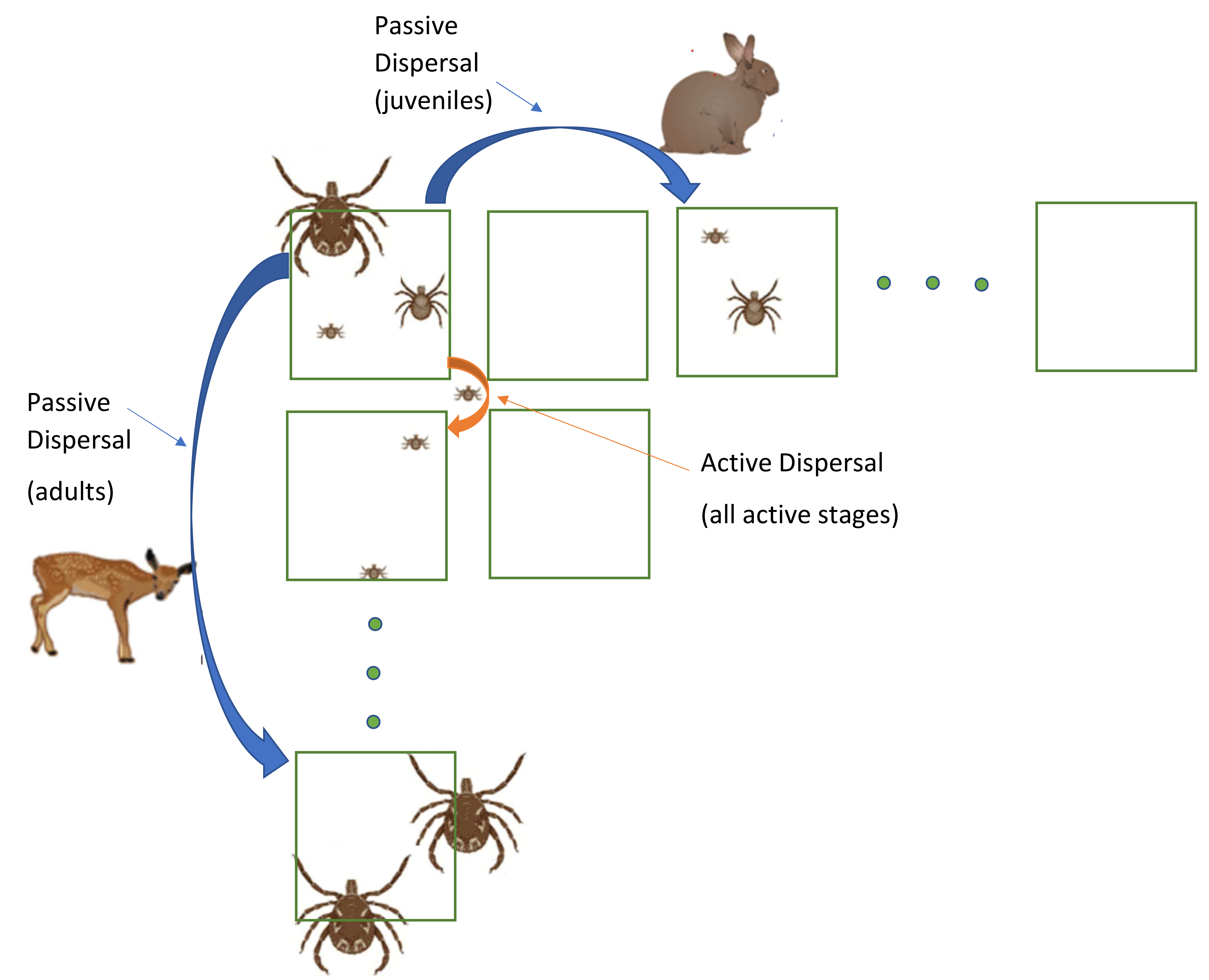
Mathematical modeling as a tool for studying the invasion and establishment of ticks and tick-borne pathogens
Amy Veprauskas
Department of Mathematics
UL Lafayette
3:30 - 5:00
20 February 2024
Oliver Hall auditorium (room 112)
Abstract
Worldwide, ticks are one of the most important vectors of human diseases. In recent decades, geographical expansions of tick populations have increased dramatically, leading to a concurrent increase in the incidence of tick-borne diseases. Understanding the complexities involved in the emergence and establishment of new tick populations and their associated pathogens is crucial for mitigating the impacts of these emerging disease threats. In this talk, we use mathematical models for three-host hard ticks to explore invasion and establishment patterns of ticks and tick-borne pathogens. These models incorporate the dependence of the tick lifecycle, disease transmission, and tick movement on host availability. We first present a tick-host-pathogen model to describe the spread of a disease in a hard tick species. We apply the model to two pathogens and numerically study metrics that describe pathogen invasion and establishment, namely the basic reproduction number, the disease prevalence, and the time to disease establishment. Using Monte Carlo simulations, we calculate the means of each of these disease metrics and their elasticities with respect to various model parameters. We find that invasion and establishment of a pathogen may be sensitive to different life cycle and transmission mechanisms. We then consider a spatially explicit model describing tick movement over a landscape. For this model we use both mathematical analysis and numerical simulations to understand spatial invasion patterns of ticks.
About the speaker
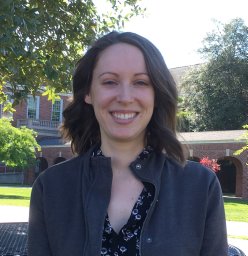
Amy Veprauskas, PhD, joined the Department of Mathematics at the University of Louisiana at Lafayette as an assistant professor in August 2018. She received her PhD in Applied Mathematics in 2016 from the University of Arizona and her MA/BA in Mathematics from Bryn Mawr College in 2010. She is originally from New Hampshire.
Dr. Veprauskas' research area is mathematical biology. She utilizes mathematical models to examine how population and evolutionary dynamics are impacted by properties of the environment or intrinsic properties of the population, such as environmental toxicants and population structure. These models can be used to address questions such as: How does variation in individuals at different development stages impact population dynamics? How may evolutionary changes in a population alter long-term population trends? How long will it take for a population to recover from a disturbance? And, what are the best management strategies for controlling a pest population? Applications of her research have included examining how cannibalism may contribute to reproductive synchrony in a gull population and studying how the interaction of multiple control mechanisms may impact the suppression of a pest species.
SIMM - April 2024
“I compute, therefore I think”: How AI Began
Subrata Dasgupta
School of Computing and Informatics
UL Lafayette
3:30 - 5:00
9 April 2024
Oliver Hall auditorium (room 112)
Abstract
For better or for worse, humanity is in the throes of a new industrial revolution fueled by a technology called ‘artificial intelligence’ (AI). But long before this came about, long before venture capitalists and entrepreneurs entered the scene, before the term ‘artificial intelligence’ was ever coined, a tiny handful of mathematicians, psychologists, engineers and logicians from both sides of the Atlantic, dared to proclaim, in Cartesian style, “I compute, therefore I think”. My talk will pay homage to these scientific begetters of AI.
About the speaker
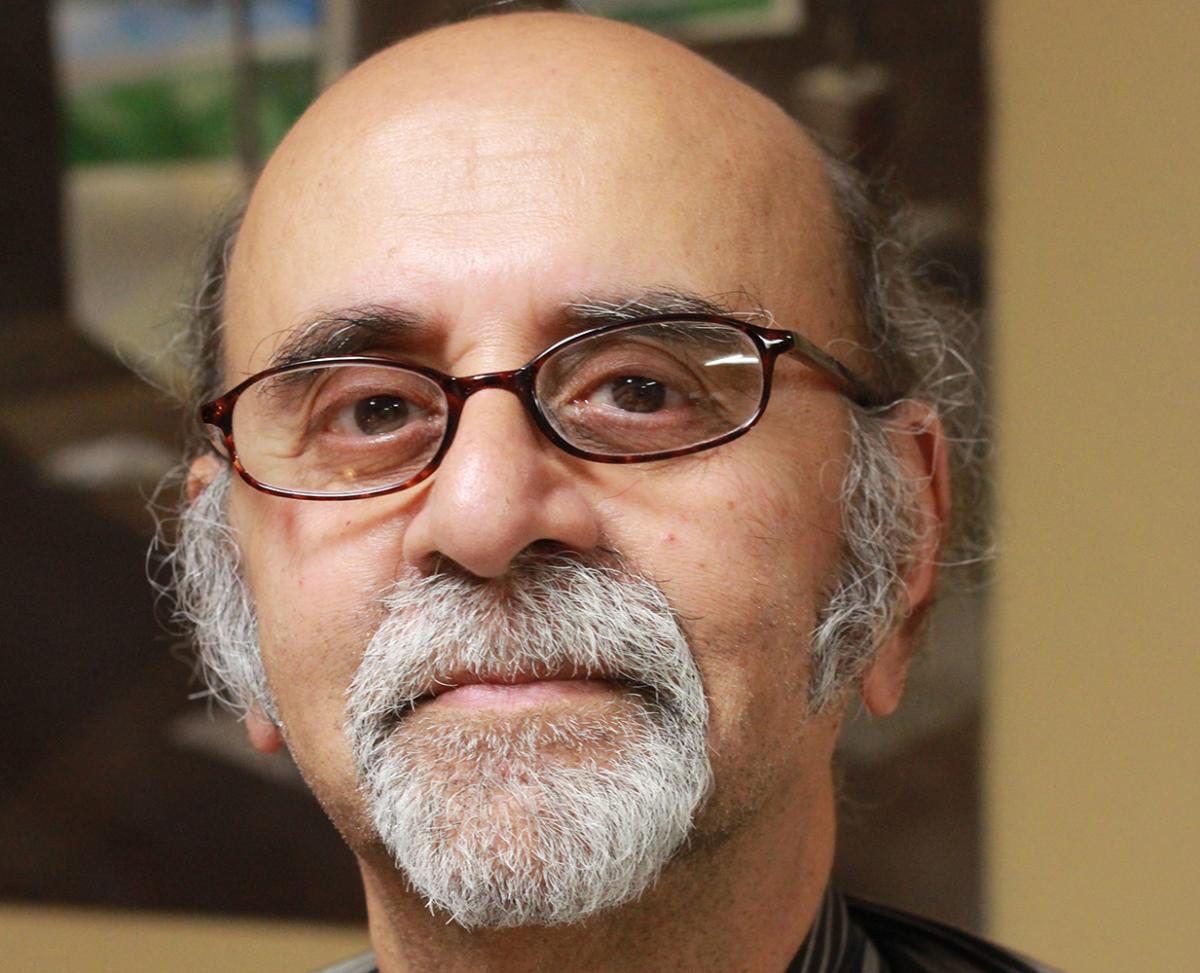
Subrata Dasgupta, Professor Emeritus in our Center for Advanced Computer Studies, is a bi-cultural multidisciplinary scholar, scientist, and writer. A native of Calcutta, he was educated in England, India, and Canada. Dasgupta has been at UL Lafayette since 1982, was a founding faculty of the Center for Advanced Computer Studies in 1984. From 1993 to 2018 he held the Computer Science Trust Fund Eminent Scholar Chair. He has also taught at Ohio State University, the University of Alberta and the University of Manchester Institute of Science and Technology. From 1999 to 2013 was the director of the Institute of Cognitive Science at UL Lafayette. From 1974 to 1991, Dasgupta's research spanned such branches of computer science as computer architecture, microprogramming, hardware description languages, program verification, and design theory. For the past quarter century, his focus has been on the historical and cognitive nature of creativity, especially in science, engineering and technology, art, design, and intellectual/cultural movements.
In addition to some 75 papers and articles, he is the author of nineteen books including, most recently, A Cognitive Historical Approach to Creativity (Routledge 2019) and The Renaissance Considered as a Creative Phenomenon (Routledge 2022).
He is also the author of three novels and a memoir called Salaam Stanley Matthews (Granta 2006). He and his work have featured in periodicals and newspapers in Britain, India, Canada and Spain, on BBC radio and television, and a number of online podcasts. Dasgupta received the UL Foundation Distinguished Professor Award in 1989. He was the recipient of the Phi Kappa Phi South Central Regional Scholar Award (2002) and the Albert Nelson Marquis Lifetime Achievement Award from the Marquis Who's Who Publications Board (2017).
Fall 2023
SIMM - October 2023
Special guest speaker in celebration of the UL Lafayette 125th anniversary
Looking for Fossils of the Big Bang in the Lab
Nobel Laureate Eric Cornell
The Cornell Group
JILA
University of Colorado Boulder and NIST
3:30 - 5:00
24 October 2023
Oliver Hall auditorium (room 112)
Reception to follow
Abstract
How can you learn about the early moments of the universe? How can you discover evidence for new sub-atomic particles? We usually think of ever-more exotic telescopes, or of ever-larger particle accelerators. I will talk about a third option which is analogous to fossil hunting. We will see that a deeper look into the humble electron today might shed light on a mystery from 14 billion years ago.
About the speaker
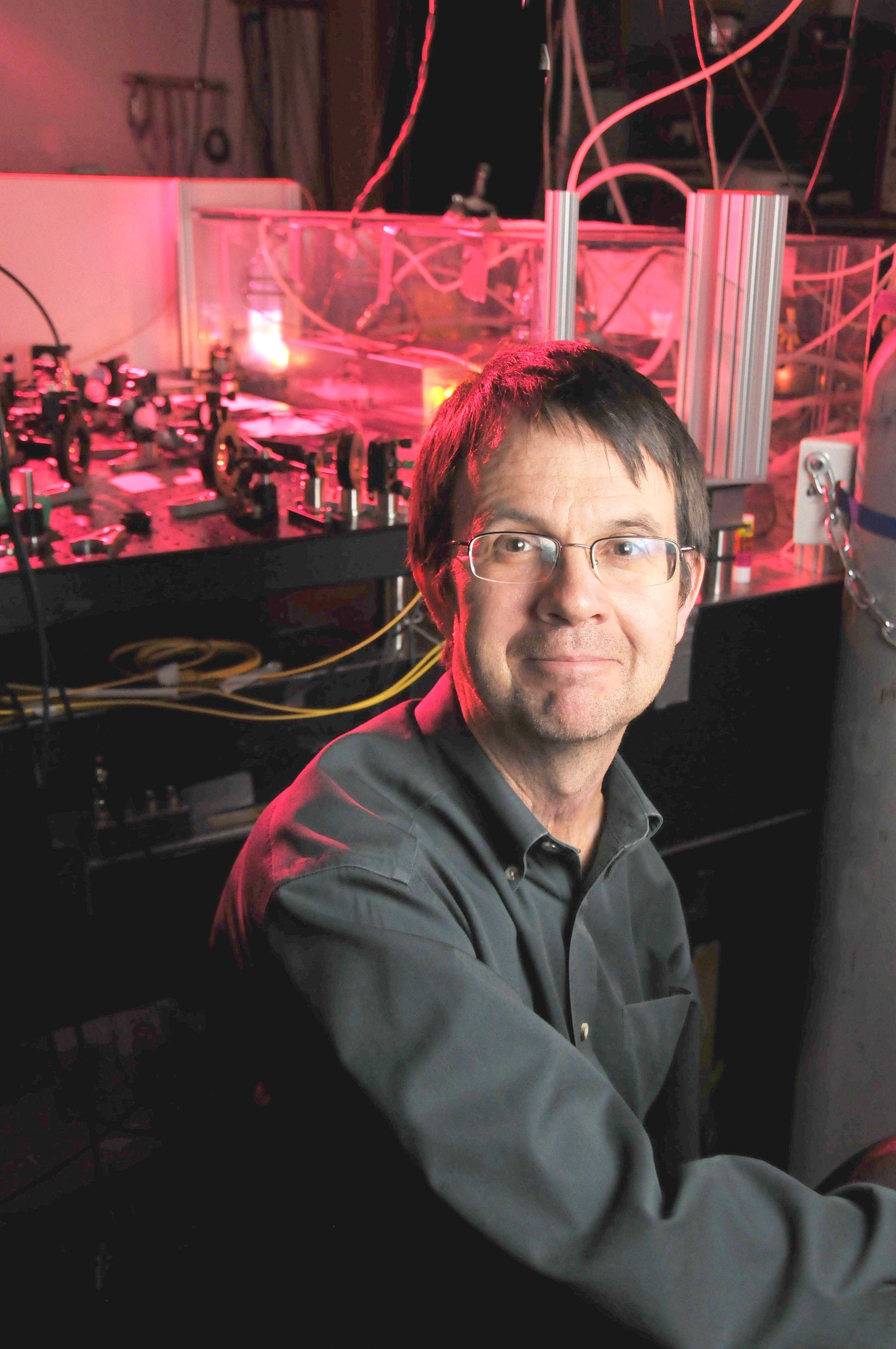
Eric Cornell is one of a group of three researchers who received the Nobel Prize in Physics in 2001.
Please visit this Nobel Prize page to read an extensive bibliography about Eric Cornell.
SIMM - November 2023
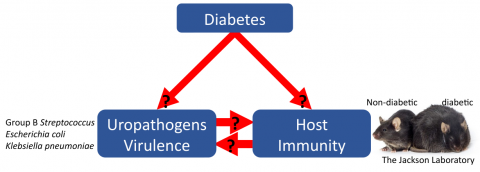
How does diabetes increase susceptibility to urinary tract infections?
Ritwij Kulkarni
Department of Biology
UL Lafayette
3:30 - 5:00
7 November 2023
Oliver Hall auditorium (room 112)
Abstract
Diabetic individuals are highly susceptible to bacterial urinary tract infections (UTI's). This is a public health concern due to the high prevalence of diabetes globally and because diabetes increases the risk of developing multidrug-resistant UTI's. Historically, alterations in the immune defenses of a diabetic host and rapid bacterial growth in glycosuria are thought to increase the incidence of UTI in the diabetic host, although three important knowledge gaps exist: (1) the effects of the diabetic urinary tract on the physiology of bacterial pathogens are undefined, (2) the changes in the immune defenses of a diabetic host are not fully deciphered, and (3) the immunological differences between male and female diabetic UTI's are unknown. To fill these knowledge gaps, we examined virulence and gene expression in uropathogenic bacteria after in vitro exposure to glycosuria (human urine + glucose, to mimic glycosuria) and studied UTI in obese diabetic mice and lean, non-diabetic littermates. Our results indicate that exposure to glycosuria increases the virulence of uropathogenic bacteria, diabetic mice are more susceptible to bacterial UTI, and that diabetic male mice readily develop severe kidney infections.
About the speaker
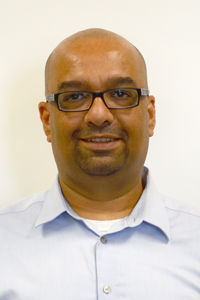
Ritwij Kulkarni, PhD joined the Department of Biology at the University of Louisiana at Lafayette as an assistant professor in August 2016. He received his PhD in Molecular Genetics and Microbiology in 2007 from Stony Brook University (the State University of New York at Stony Brook) under the mentorship of Dr. David Thanassi. The focus of his doctoral dissertation was identification and characterization of novel virulence factors in uropathogenic Escherichia coli, an important pathogen causing urinary tract infections in humans. After receiving his PhD, Dr. Kulkarni completed post-doctoral training in the laboratory of Dr. Adam Ratner at the Department of Pediatrics at Columbia University. The focus of his postdoctoral research was to understand the effects of cigarette smoke exposure on the respiratory tract immune defense as well as on the pathogenic bacterial colonizing the airways.
To answer "how does environment shape interactions between mucosal immunity and bacterial virulence?" the Kulkarni lab at UL Lafayette is pursuing two broad research themes: (1) examining host-pathogen interactions shaped by the diabetic and non-diabetic urinary tracts and (2) understanding the pathophysiology of bacterial pneumonia in respiratory microenvironment shaped by cigarette smoking and vaping. Since 2016, 7 graduate students (4 PhD and 3 MS) have successfully defended their dissertations and theses under Dr. Kulkarni’s mentorship. Currently, 3 graduate students (2 PhD and 1 MS) are working on various research projects the Kulkarni lab. In addition, Dr. Kulkarni has advised 15 undergraduate research projects and credited their contributions in peer-reviewed publications. Currently, 4 undergraduate students are working in the lab.
Spring 2023
SIMM and Herman Hughes Lecture - March 2023
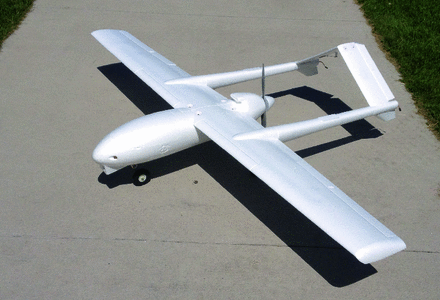
NextGen UAVs: Challenges and Opportunities
Dr. Kimon P. Valavanis,
John Evans Professor
D. F. Ritchie School of Engineering and Computer Science
University of Denver, Denver, Colorado
3:30 - 4:30
14 March 2023
Oliver Hall auditorium (room 112)
4:30 - 5:15
Reception -- meet and greet Dr. Valavanis
Oliver Hall Lobby
Abstract
Unmanned Aerial Vehicles (UAVs) or Unmanned Aircraft Systems (UAS) are generally highly complex nonlinear systems. When considering NextGen UAVs/UAS, which include hybrid and reconfigurable designs, morphing wing designs, and Circulation Control Wing (CCW) based designs, such systems are also time-varying systems. Modeling and controller design for such systems, which are also subjected to unstructured uncertainties, goes beyond known conventional techniques. Reconfiguration, morphism, and CCWs introduce changes in the aerodynamic coefficients that are difficult to determine using strict mathematical formulas. Systematic approaches are required for (the non-constant value) parameter identification, followed by controller designs that are based on a family of admissible models and not on an a-priori-defined nominal model.
This lecture considers a NextGen CCW-based fixed-wing aircraft, called UC2AV, and introduces a comprehensive approach to modeling, identification, and controller design. The proposed controller is a novel, robust nonlinear controller for the longitudinal/lateral flight dynamics of the UC2AV, consisting of a dynamic inversion inner-loop and a μ-synthesis outer-loop controller. Results demonstrate the efficacy of the proposed modeling and control schemes and the ability of the UC2AV to adapt to challenging CC-on-demand scenarios. The proposed controller design may be generalized and applied to a family of nonlinear systems with unstructured uncertainties and time-varying parameters, going beyond addressing uncertainty challenges regarding the aircraft’s aerodynamic coefficients.
Then, multi-rotor UAVs are considered, and modeling challenges are tackled to account for a plethora of disturbances that may affect performance. A benchmark framework is derived for controller implementation and comparison via simulations, simulated experiments, and actual flight tests.
About the speaker
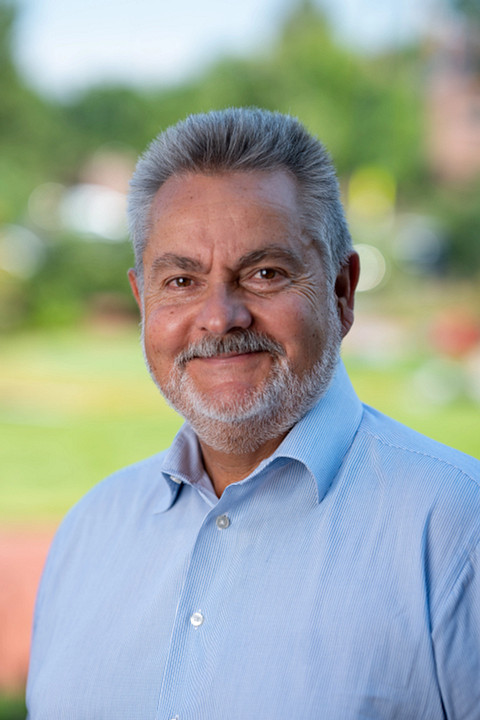
Dr. Kimon P. Valavanis is John Evans Professor, Department of Electrical and Computer Engineering, Daniel Felix Ritchie School of Engineering and Computer Science, University of Denver. He is a Guest Professor in the Faculty of Electrical Engineering and Computing, University of Zagreb, Croatia. He held Visiting Appointments at Politecnico di Torino, Dipartimento di Ingegneria Meccanica e Aerospaziale, DIMEAS, and he was Professeur Invité, Université de Lorraine - Polytech Nancy, in France.
Dr. Valavanis' research interests span Unmanned Systems, Distributed Intelligence Systems, Robotics, and Automation. He has published more than 450 book chapters, technical journal articles, transaction papers, referred conference papers, and invited papers. He has authored/co-authored/edited 19 books. He has graduated 38 Ph.D. students and more than 100 M.Sc. students.
Dr. Valavanis served as Editor-in-Chief of the Robotics and Automation Magazine from 1996-2005, and since 2006, of the Journal of Intelligent and Robotic Systems, Springer. He also has served as co-chair of the Aerial Robotics and Unmanned Aerial Vehicles Technical Committee since 2008. He founded the International Conference on Unmanned Aircraft Systems, which he runs annually.
Dr. Valavanis was a Distinguished Speaker in the IEEE Robotics and Automation Society, a Senior Member of IEEE, a Fellow of the American Association for the Advancement of Science, a Fellow of the U.K. Institute of Measurement and Control, and a Technical Expert of the NATO Science and Technology Organization (STO). He served as NATO Technical Evaluator for the AVT-353 Workshop on ‘Artificial Intelligence in the Cockpit for UAVs’ that was held in Torino, Italy, in April 2022. In August of 2021, he was appointed to the NATO STO Technical Team of SAS-ET-EX on “Integration of Unmanned Systems into Operational Units” for the duration of the Program of Work. He is also a Fulbright Scholar (Senior Lecturing and Research Award).
SIMM - February 2023
Shear wave exploration at Tarim Basin, west China
Rui Zhang
School of Geosciences and Department of Physics
UL Lafayette
3:30 - 5:00
Tuesday, 14 February 2023
Oliver Hall auditorium (room 112)
Abstract This talk will introduce a shear wave (S-wave) seismic survey conducted in Tarim Basin, west China, including shear wave seismic data acquisition, processing and interpretation. Conventional seismic survey uses compressional (P-wave) seismic survey, which faced difficulty of wide spread subsurface gas clouds in Tarim Basin. This leads to the utilization of shear wave seismic survey, which is not influenced by the gas clouds and produce much clearer subsurface structure image. The obtained shear wave seismic data allows us to interpret the subsurface geological structure and properties for potential gas prospects with much stronger confidence.
About the speaker
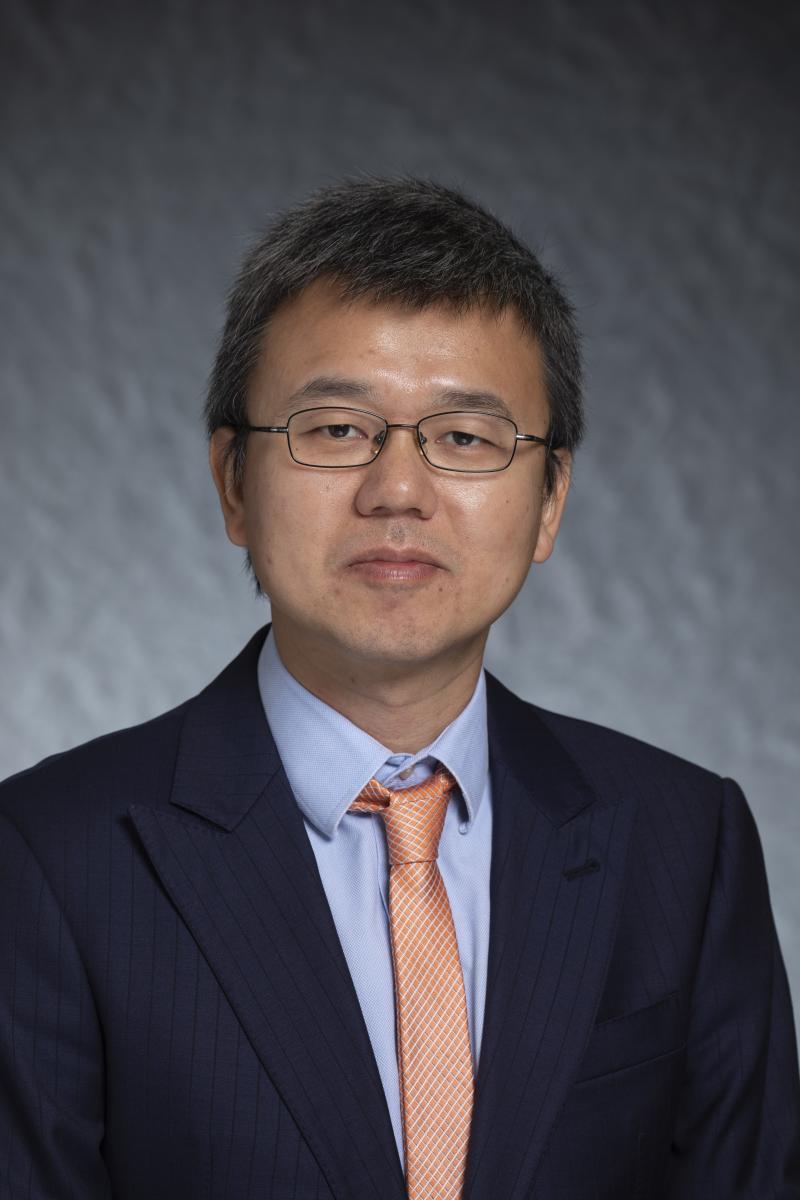
Rui Zhang received his PhD in Geophysics in 2010 from University of Houston. After graduation, Dr. Zhang worked as postdoc at the University of Texas at Austin and Lawrence Berkeley National Laboratory. Dr. Zhang joined UL Lafayette in 2014 as assistant professor with joint appointment between School of Geosciences (70%) and Department of Physics (30%) and was promoted to associate professor in 2020. Dr. Zhang’s research interests are focusing on geophysical applications on energy transition from fossil fuel to geothermal, CO2 sequestration and hydrogen storage, etc. Dr. Zhang has brought in multi-million external funding and published more than thirty peer-review journal papers.
Fall 2022
SIMM - November 2022
Perseverance and Ingenuity: The First Sounds from Mars and the Future of Acoustic Sensing in Alien Environments
Andi Petculescu
Department of Physics
UL Lafayette
3:30 - 5:00
Tuesday, 22 November 2022
Oliver Hall auditorium (room 112)
Abstract Acoustic studies of extraterrestrial atmospheres is a nascent field, which has been gaining momentum at a very fast pace. The first relevant acoustic measurements were done by the Huygens lander in Titan’s atmosphere in 2005. Most recently, the Mars2020 mission has deployed Perseverance, the latest Martian rover and, for the first time, a helicopter—Ingenuity. Among the instruments on board Perseverance is a research-grade customized microphone, whose processing hardware was specially developed for Mars’ extreme environment. The microphone and its electronics are part of the SuperCAM instrument. If Huygens recorded data for approximately four hours, Perseverance will have acquired acoustic signals for at least two years by the end of its mission. The Mars2020 datasets contain ambient wind noise, acoustic shock waves produced by the SuperCAM’s Laser-Induced Breakdown Spectrometry (LIBS) impacts on Martian rocks, as well as the acoustic signature of the Ingenuity helicopter in various flight regimes. Thus, we hope to gain new insights into the near-surface temperature gradients, heat flux balance, and composition profiles of Mars’ deep atmosphere, the mechanism underlying laser-generated shockwaves in the Martian environment, as well as twin-rotor aeroacoustics in a tenuous atmosphere.
Beside the latest acoustic data from the Martian rover Perseverance, I will also present comparative acoustic properties of the atmospheres of Mars, Venus, and Titan, and perspectives for planetary exploration.
About the speaker
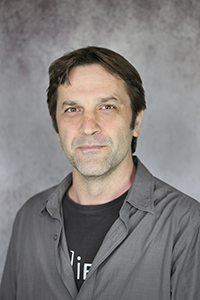
Andi Petculescu joined the Department of Physics in August 2006. He holds a PhD in Physics from Ohio University, obtained in 2002. Before coming to UL Lafayette, he was a Postdoctoral Fellow at the National Center for Physical Acoustics (Oxford, MS) and Northwestern University (Evanston, IL), working in the fields of ultrasonic vibrometry, porous media acoustics, and acoustic sensing in gases. It is then that he branched out into developing acoustic sensing techniques for Mars, Venus, and Titan. Since coming to UL Lafayette, Dr. Petculescu has directed MS theses on topics ranging from theoretical modeling of sound propagation in terrestrial atmospheres to experimental work in physical acoustics and speech processing. He has been an active member of the Acoustical Society of America since 1998, for which he has organized special sessions on planetary acoustics, and has been an Associate Editor since 2017. In 2021, Dr. Petculescu was named a Fellow of the Acoustic Society of America for his contributions to acoustics in planetary atmospheres.
SIMM - October 2022
Reconfigurable Computing Technology - Past, Present, and Future
Martin Margala
School of Computing and Informatics
UL Lafayette
3:30 - 5:00
Tuesday, 25 October 2022
Oliver Hall auditorium (room 112)
Abstract This talk will provide a comprehensive overview of the research and development in reconfigurable computing technologies, from hardware to software and in-between. Concepts such as rapid prototyping, from processing-in-memory to computing-in-memory, heterogenous computing and FPGAs everywhere are some of the examples that will be explained.
About the speaker
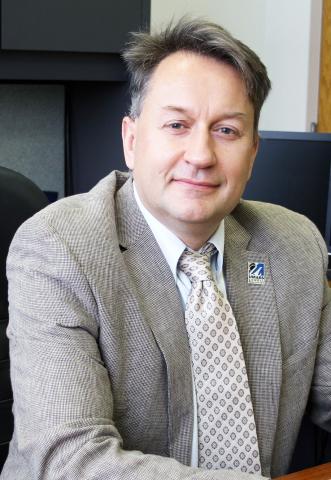
Martin Margala, PhD joined the School of Computing and Informatics as Professor and Director in August 2021. Before joining UL Lafayette he spent 15 years at the University of Massachusetts Lowell where he served 10 years (3 times elected by the department) as the Department Chair of Electrical and Computer Engineering and a Co-Director of the Center for Smart Cyber-Physical Systems (SCyPS). In 2016 he was awarded a Fulbright Distinguished Chair appointment and spent one year assigned to the US Embassy in Prague to work on international STEM initiatives. Dr. Margala received his PhD degree in Electrical and Computer Engineering from the University of Alberta, Canada in the spring of 1998. His research passion is in sustainable computing, design for testability and novel computing concepts in hardware. He is a senior member of ACM, IEEE, and SPIE with more than 50 journal and 200 peer reviewed conference publications in the areas of Design for Testability for Energy Efficient Architectures and Systems, High-Performance Reliable Low-Power Architectures and Reconfigurable Secure Architectures and Systems. Dr. Margala has directed 22 PhD students and 19 MS students, many of whom now hold leading positions in academia and industry. He has served on numerous program committees of international conferences and on workgroups (such as the International Technology Roadmap for Semiconductors) that have a great impact on the future direction of academia and industry.
Spring 2022
This semester we are looking forward to two internal speakers and the Herman Hughes Lecture. On 22 February 2022 Brent Yantis, director of the Regional Application Center will speak. The Herman Hughes Lecture will be held on Tuesday 15 March 2022. The Herman Hughes Lecturer is Cherry Murray, University of Arizona Professor of Physics and Deputy Director for Research, Biosphere 2. In mid April Radhey Srivastava of our chemistry department will lead the second SIMM of the semester.
We will conduct the seminar through Zoom this semester. Please email us to request the connection details.
SIMM - April 2022
Metal Complexes in Medicine: from Drug Design Perspective
Radhey Srivastava
Chemistry Department
UL Lafayette
3:30 - 5:00
Tuesday, 12 April 2022 on Zoom
Abstract In this seminar, I provide a personal account highlighting several of my group's research contributions in organometallic chemistry. Our work primarily focusses on the reactivity of organometallic catalysts and their use in synthesis of organic compounds. Other efforts have centered on the discovery and development of new metal-catalyzed organic reactions via reactive metal-organic intermediates. More recently, we have become interested in exploring the chemistry of asymmetric (Chiral (i.e. compounds with distinguishable conformers that are non-superimposable mirror images) compounds. The vast majority of asymmetric (chiral) compounds find use in drugs. Recently, we developed a novel method for Cu-catalyzed direct asymmetric amination of alkenes and tertiary-carbonyl compounds using aryl hydroxylamine as the nitrogen source. The process facilitates the convenient and direct synthesis of chiral-amino derivatives, without the need for any post-reaction manipulation.
Enantioselective C-N bond formation reactions are promoted in the presence of Cu(MeCN)4PF6 as a pre-catalyst and R(+)-BINAM as a chiral ligand. This protocol delivers chiral N-aryl allylamines in good yields and enantioselectivities. Dataregarding the effect of ligand structure and solvents on the efficiency and enantioselectivity of amination reactions are presented. Furthermore, isolation of metal-ligand-nitroso complex, ESI-MS reaction monitoring analysis and electronic structure calculations provided additional insights into the mechanisms. Supporting DFT calculations of the reaction path suggests that the stereoselectivity is determined in the conversion of (BINAM)Cu(PhNO)((dot)^2-alkene)+ to (BINAM)Cu(N-Ar hydroxylamine) via a concerted, asynchronous transition state for C-N bond formation. This catalytic approach features operational simplicity, high product yields with good enantioselectivity, and no by-products except water.
About the speaker
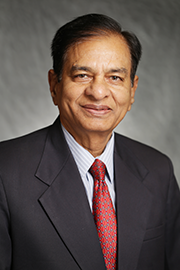
Radhey S. Srivastava is the Boudreaux/BoR Distiguished Professor in the Department of Chemistry at the University of Louisiana at Lafayette. Dr. Srivastava is an organometallic chemist. His work focuses on metal catalyzed C-N bond formation from the drug design perspective. Other areas of research from his lab have been metal catalyzed biomass energy or value-added chemicals, and ruthenium based anticancer drugs. On a broader level, he is interested in developing new synthetic techniques to synthesize value added chemicals leading to drug formation and valuable chemicals. A major thrust of his research group has been to not only synthesize amines for therapeutic application but also to understand the mechanisms of the reaction.
Radhey Srivastava started his academic journey after graduating from India (University of Gorakhpur) and Japan (Tokyo Institute of Technology). He spent a few years as a research associate in leading organometallic/ catalysis research groups in Europe and the USA. His research involved the use of modern analytical methods to monitor chemical reactions. His projects cover a wide range of subjects in inorganic chemistry and organometallic chemistry (homogeneous catalysis). His group extensively utilizes modern spectroscopic and analytical tools in organic product identification, metal complexes and organic structure characterization as well as in mechanistic studies.
SIMM and Herman Hughes Lecture - March 2022
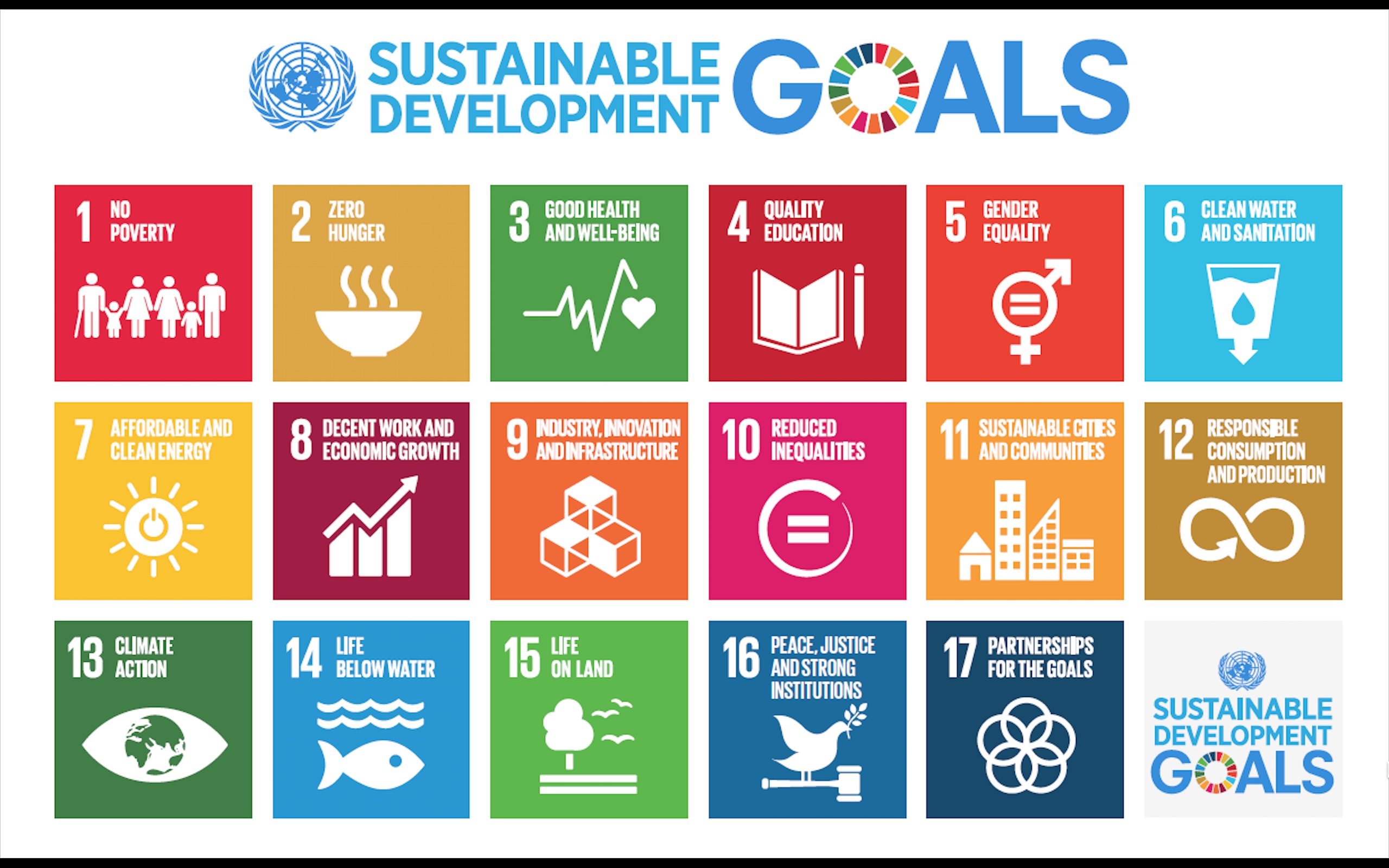
Science, Technology, and Innovation to meet Global Grand Challenges
Cherry Murray
Professor of Physics and Deputy Director for Research, Biosphere 2
University of Arizona
3:30 - 5:00, Tuesday, 15 March 2022 on Zoom
Zoom Time: 15 March 2022 03:30 PM Central Time (US and Canada)
Please send us a request if you wish to join this Zoom meeting.
Abstract
The Earth is faced with multiple grand challenges and existential threats, all at once. The progress towards achieving the 2015 United Nations Sustainable Development Goals for 2030 has been hampered and even pushed backwards by the COVID-19 pandemic and ensuing economic devastation. I will address the need for systemic change through providing stimulus funds in each country and globally that re-double our efforts to achieve these lofty goals for an equitable, sustainable future for all that is resilient to system shocks such as climate change, biodiversity loss and future pandemics. In order to sustain the Paris goal of an earth temperature rise by 2 or better, 1.5 degrees, humanity's greenhouse gas emissions must be reduced drastically, to below 100% of current levels by 2050. We will need to deploy technologies that are at all stages of the readiness levels now, as well as move to a circular economy. There are encouraging signs that nations are investing stimulus funds to rebuild economies after COVID-19 with aim of accomplishing these goals for sustainability. I will suggest areas of research, development, demonstration and deployment in which advances are needed in order to meet this grand challenge.
About the Speaker
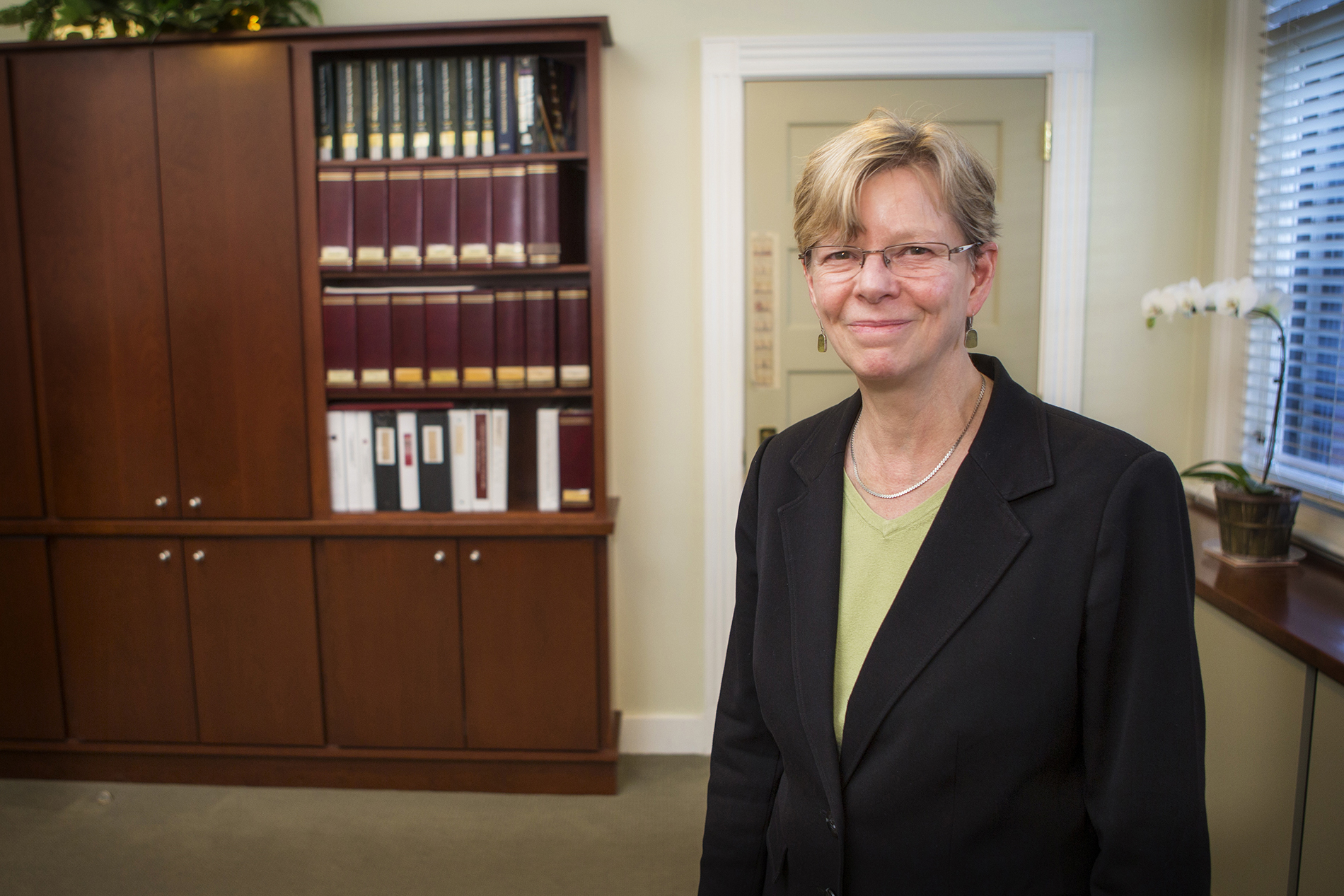
Cherry Murray, University of Arizona Professor of Physics and Deputy Director for Research, Biosphere 2
Cherry Murray, Professor of Physics at the University of Arizona, is Deputy Director of Research at Biosphere2. She obtained BS and PhD degrees in physics from the Massachusetts Institute of Technology. Her research interests evolved from experimental condensed matter and surface physics to nanotechnology, innovation, R&D of telecommunications networks, to science, technology, national security and energy policy, science diplomacy and global sustainable development. From 1978 to 2004, Murray held a number of research and executive positions at Bell Laboratories, eventually becoming Senior Vice President for Physical Sciences and Wireless Research. She then served at Lawrence Livermore National Laboratory as Principal Associate Director for Science and Technology from 2004 to 2009. She was dean of Harvard University’s School of Engineering and Applied Sciences from 2009 until 2014. Murray served as the Director of the US Department of Energy Office of Science, from 2015 until 2017, overseeing $6 billion in competitive scientific research as well as the management of 10 national laboratories. She then became Benjamin Peirce Professor of Technology and Public Policy and Professor of Physics at Harvard until her retirement in 2019. A member of the National Academy of Sciences, the National Academy of Engineering, and the American Academy of Arts and Sciences, co-chair of the InterAcademy Partnership, and co-chair of the United Nations 10-Member Group in support of the Technology Facilitation Mechanism, Murray has received the US National Medal of Technology and Innovation as well as the American Physical Society Maria Goeppert-Mayer Award and George E. Pake Prize. She was President of the American Physical Society in 2009.
SIMM - February 2022
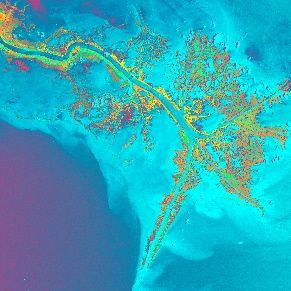
An Inside Look into the World of Imagery
R. Brent Yantis, Director
NASA/UL Lafayette Regional Application Center
3:30 - 5:00
Tuesday, 22 February 2022
Abstract
The University of Louisiana at Lafayette Regional Application Center (RAC), specializing in satellite imagery and remote sensing technology, receives, manipulates, and disseminates satellite and other remotely sensed or geospatial data effectively and inexpensively in near real-time for any application development. One such technology is the NASA/USGS Landsat program of satellites. The Landsat satellites continuously photograph the earth using remote sensing (RS) devices measuring land cover, water, and ecosystems. The images are shared with the military, governmental agencies, research centers and the public.
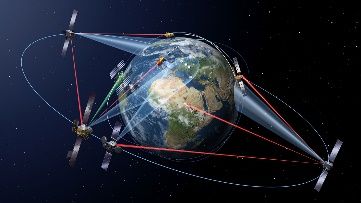
The RAC works directly on projects in Emergency/Disaster Response, Workforce Development, Agency Contracts, Applied Research, along with Education and Outreach. Many of these endeavors involve working with the United States Geological Survey, the Louisiana National Guard, NOAAs Weather Ready Nation program, AmericaView and local governments, along with emergency response agencies, local and across the Americas. The Landsat satellite system is extremely valuable to so many industries as the longest continuous global record of the Earth's surface from space, going on 50 years. Landsat 9, launched September 2021, now collects images of the Earth every 16 days in an 8-day offset with Landsat 8 collecting as many as 1,500 new scenes a day for the US Geological Survey Landsat archive. These images work alongside collections from the European Space Agency (ESA) Sentinel Satellite program.
UL Lafayette students can become geographic information science (GIS) certified through the RAC/School of GeoSciences/Geography and the UL Lafayette Board of Regents approved Certification program starting Fall of 22. The future is bright for these GIS/RS students as more data, Imagery, and other variables are collected; the ability to manipulate and interpret these models is invaluable. The technology needs span emergency response, coastal restoration, transportation, agriculture, disaster mitigation, forestry, human health, and the list goes on.
The center also offers GIS/RS continuing education classes and workshops, including coordinated training for Geospatial First Responders for hurricanes and other disasters, now entering its 23rd year. The RAC was invited by the United States Geological Survey (USGS) and the National Aeronautics and Space Administration (NASA) to the Landsat 9 satellite launch at Vandenberg Air Space Base in California during the week of September 16, 2021, to display the university’s “Earth as Art” satellite images traveling gallery exhibit, floor puzzles and outreach materials. The RAC worked as part of the education and outreach component of the launch. This launch marked the beginning of the 50th year celebration of the Landsat satellite program continuing through 2022.
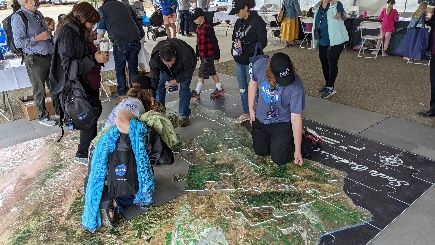
Building on its work with USGS and NASA on the Landsat satellite program and Earth as Art exhibitions the RAC is now embarking on a new frontier through a National Science Foundation grant to empower earth observation education for Local High School Students and those continuing enrollment at the university in STEM related education and research over the next three years. This is an exciting new endeavor, as the RAC, working with university students works to support the next 50 years of Landsat satellite technology, education and outreach through the Earth as Art gallery images of this planet we call home.
About the speaker
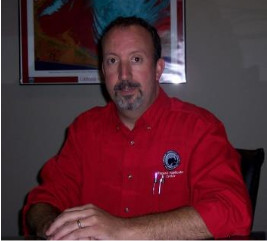
Brent Yantis is the Director of the NASA/UL Lafayette Regional Application Center at the University of Louisiana at Lafayette. Having a degree in Agriculture and a Master’s in Landscape Architecture: Landscape Ecology/GIS and Remote Sensing, he is the current Board Chair of the National AmericaView program; Director of LouisianaView; State GeoSpatial Contractor to the Louisiana Army National Guard and USGS; and is a member, past President, of the Mid-South ASPRS and member of the Louisiana and Caribbean chapters of URISA working in emergency response since 2001. He hosts training for Natural Disaster and Emergency Response held annually for 23 years. His affiliation with the International Charter for Disaster Response as a Project Manager since 2006 has led to working with Hurricanes Ida, Laura, Delta, Rita, Katrina, Ike, Gustav, Andrew, Florence, Michael, Dorian (to name a few) and Oil Spill response to the DeepWater Horizon, along with flood mapping in Nepal.
He worked as geospatial data coordinator, Project Manager, for the International Charter activations for 2016 in both Louisiana and Texas during the March, May and August Floods, Hurricane Harvey in 2017 and satellite imagery coordinator, working with 17 countries for Hurricanes Florence and Michael in 2018 and in 2019, Hurricane Dorian over the Bahamas. Brent teaches GIS and Remote Sensing classes as part of a certification program at the University of Louisiana at Lafayette and has developed an “Earth As Art” Traveling Art Exhibition for remote sensing satellite imagery working with the USGS and NASA programs. This Art gallery exhibit was on display at the USGS National Headquarters – Reston, Va. in March 2019, USGS EROS – Sioux Falls, SD in 2017 and over 20 state exhibitions since 2013.
Brent, as part of a UL Lafayette team, was awarded as a finalist in the NASA “My American Landscape” national competition for the 40th Anniversary Celebration of Landsat 2012, along with the Outstanding Service Award for Remote Sensing Outreach Activities in Washington, D.C. in 2013 by AmericaView. He was awarded the 2013 Distinguished Service Award for the Advancement of Spatial Analysis in Louisiana by his peers in GIS and Remote Sensing and has received awards in 2014, 2015, and 2016 from the AmericaView program for the advancement of Remote Sensing. In the Fall of 2021, he was commissioned by USGS and NASA to bring the traveling Earth as Art Gallery Exhibit and assist in the public and student education outreach, utilizing materials he helped NASA and USGS develop for the promotion of the Landsat Satellite remote sensing program. These activities were conducted as part of the launch of the Landsat 9 satellite system. Currently, Brent is working as part of the national outreach program to highlight the 50th Anniversary of the Landsat program with NASA and USGS and overseeing the implementation of his NSF GeoPaths grant: GEOSERVICE – Geoscience Students Excelling in Real, Vital Investigations with Community Engagement (GEO SERVICE) working with UL Lafayette students, faculty and the Lafayette Parish School System.
Fall 2021
SIMM and Herman Hughes Lecture - November 2021
Of Brains and Computers
Jan M. Rabaey
Professor in the Graduate School, UC Berkeley
CTO STCO Division, IMEC, Belgium
3:30 - 5:00, Tuesday, 16 November 2021 on Zoom
Zoom Time: 16 November 2021 03:30 PM Central Time (US and Canada)
Please send us a request if you wish to join this Zoom meeting.
Abstract
The human brain - which we consider to be the prototypal biological computer - in its current incarnation is the result of more than a billion years of evolution. Its main functions have always been to regulate the internal milieu and to help the organism/being to survive and reproduce. With growing complexity, the brain has adapted a number of design principles that serve to maximize its efficiency in performing a broad range of tasks. The physical computer, on the other hand, had only 200 years or so to evolve, and its perceived function was considerably different and far more constraint – that is to solve a set of mathematical functions. This however is rapidly changing. One may argue that the functions of brains and computers are converging. If so, the question arises if the underlaying design principles will converge or cross-breed as well, or will the different underlaying mechanisms (physics versus biology) lead to radically different solutions.
About the Speaker
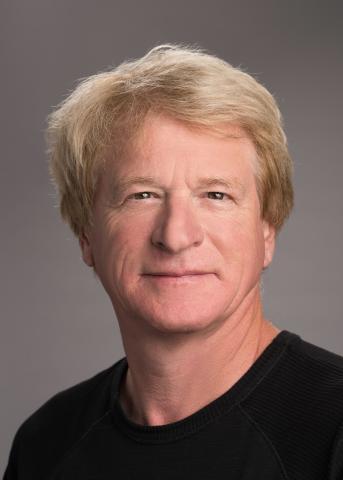
Jan M. Rabaey, Division of Electrical Engineering, UC Berkeley
Jan is a Professor in the Graduate School in the EECS Department at the University of California at Berkeley, where he held of the Donald O. Pederson Distinguished Professorship for over 30 years before retiring. Before joining the faculty at UC Berkeley, he was a research manager at IMEC from 1985 until 1987. He is a founding director of the Berkeley Wireless Research Center (BWRC) and the Berkeley Ubiquitous SwarmLab, and has served as the Electrical Engineering Division Chair at Berkeley twice. In 2019, he also became the CTO of the System-Technology Co-Optimization (STCO) Division of IMEC, Belgium.
He has made major contributions to a number of fields including low power integrated circuits, advanced wireless systems, mobile devices, sensor networks, and ubiquitous computing. Some of the systems he helped envision include the infoPad (a forerunner of the iPad), PicoNets and PicoRadios, the Swarm, Brain-Machine interfaces and the Human Intranet. His current interests include the conception of the next-generation distributed systems, as well as the exploration of the interaction between the cyber and the biological worlds.
He is the recipient of major awards, amongst which the IEEE Mac Van Valkenburg Award, the European Design Automation Association (EDAA) Lifetime Achievement award, the Semiconductor Industry Association (SIA) University Researcher Award, and the SRC Aristotle Award. He is an IEEE Fellow, a member of the Royal Flemish Academy of Sciences and Arts of Belgium, and has received a number of honorary doctorates. He has been involved in a broad variety of start-up ventures.
SIMM - October 2021
Seeing is believing. How novel imaging techniques inform on biological processes
Francois Villinger
New Iberia Research Center and Biology Department, UL Lafayette
3:30 - 5:00
Tuesday, 19 October 2021 ON ZOOM
Zoom Time: 19 October 2021 03:30 PM Central Time (US and Canada)
Please send us a request if you wish to join this Zoom meeting.
Abstract
A major emphasis of my laboratory has been to not only generate and test preventive and therapeutic immune responses to infectious agents but also to attempt to understand the mechanisms underlying immune responses and pathomechanisms in diseases affecting humans, using an animal model the closely resembles humans. One such avenue of research has been trying to understand how HIV infection persist even after extended time on antiretroviral therapy (ART). While the latter has markedly changed the clinical outlook of HIV infection, ART falls short of viral eradication, leading to rapid viral rebound post ART interruption (ATI). However the exact source of this rebounding virus has remained the source of a vigorous ongoing scientific debate.
We have used the rhesus macaque infected with simian immunodeficiency virus (SIV) and simian/human immunodeficiency (SHIV) as our model to investigate potential mechanism of viral persistence under prolonged ART. To that effect, we have developed positron emission tomography/computer tomography (PET/CT) techniques using antibodies or fragment thereof labeled with isotopes have proven highly sensitive to identify residual replication, largely dispelling the notion that the virus is fully latent. In fact, we show that virus rebounds rapidly upon ATI from reservoir sites that are still detected as marginally active while still on ART. Moreover, the technique allows for whole body to single cells analysis to determine which cells comprise the viral reservoir, opening the field to novel previously unappreciated possibilities that can readily translate to the clinic.
Another area of research from our lab has been the investigation of the mechanisms at the origin of decreased immune responses to immunization in the aged. Comparing young and geriatric rhesus macaques, we recently highlighted the potential role of interleukin 21 (IL-21) as a critical factor produced in lymph nodes during antigen presentation that is deficient in aged individuals. Exogenous administration with IL-21 markedly restored immune response to near normal levels in this group while achieving no real enhancement in younger subjects.
About the speaker
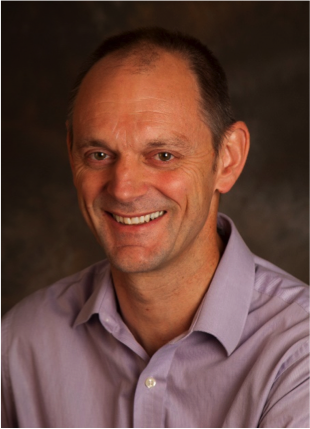
Francois Villinger, DVM, PhD, Director of the New Iberia Research Center, graduated from the University of Zurich, Switzerland with a Doctor of Veterinary Medicine in Virology in 1986. He has been focused on infectious diseases and immune responses to pathogens, including immunopathological mechanisms immunotherapeutic approaches and the exploration of protective vaccines. His interest has been focused on the pre-clinical nonhuman primate (NHP) models of human disease, primarily models of AIDS and the testing of experimental vaccines and vaginal and rectal microbicides to prevent the acquisition of SIV and SHIV across mucosal surfaces.
SIMM - September 2021
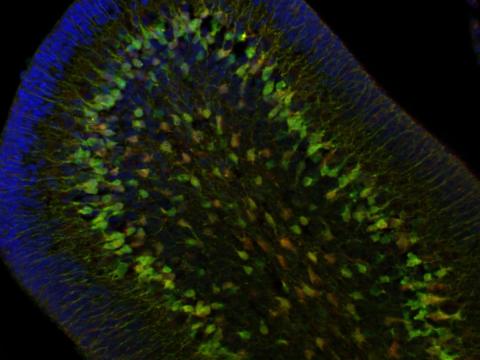
Neurodevelopmental Perspectives in Brain Health and Behavior
Karen Müller Smith
Biology Department, UL Lafayette
3:30 - 5:00
Tuesday, 21 September 2021
Abstract
Our lab seeks to elucidate how various cell types of the brain interact to regulate physiology and mental health. We have various projects studying astrocytes-neuron interactions. Astrocytes are cells that the serve as stem cells for neurons and glia, and also have multiple roles in the adult brain including recycling of neurotransmitters, providing lactate to neurons, formation and regulation of the blood brain barrier, response to injury, and secretion of factors that promote synapse formation and health of the neurons in the brain. Fibroblast Growth Factors (FGFs) and their receptors (FGFRs) are expressed by astrocytes of various morphologies and functions throughout the nervous system. The inactivation of FGFRs in laboratory mice leads to astrocyte dysfunction in neural development, reduced astroglial stem cell proliferation, abnormal GABAergic interneuron development, and disrupted morphology of specialized astrocyte cell types. These disruptions have influences on both behavior and motor coordination, and have implications for disorders such as schizophrenia, depression, and ADHD. Amongst our projects are studies of the interaction between astrocytes and GABAergic neurons in a co-culture model, studying the behavior of mice lacking FGFRs, studying the role of FGFRs in tanycytes (a specialized type of astrocyte found in the hypothalamus, an area of the brain that is important for hormonal regulation and homeostasis), and studying the role of FGFRs in Bergmann glia of the cerebellum.
Our second main area of study is the neurobiology of Self Injurious Behaviors (SIB). Self-Injurious Behaviors are present in a large portion of the population across ages. Non-suicidal self-injury can lead to permanent scarring, infection, and fractures, and is also associated with an increased risk of suicide attempts. Primates can also display self-injurious behaviors and the triggers for self-injury in both human and non-human primates include stressful situations and early life adversity. The neurobiology of self-injury is not well understood, and primate studies offer a valuable model for investigating the mechanisms for this behavior . We have investigated endogenous opioid signaling and Stress receptor signaling in animals with SIB and found that the mu-opioid receptor is downregulated in the amygdala, which regulates fear-based learning and emotional regulation, in rhesus macaques with SIB.
About the speaker
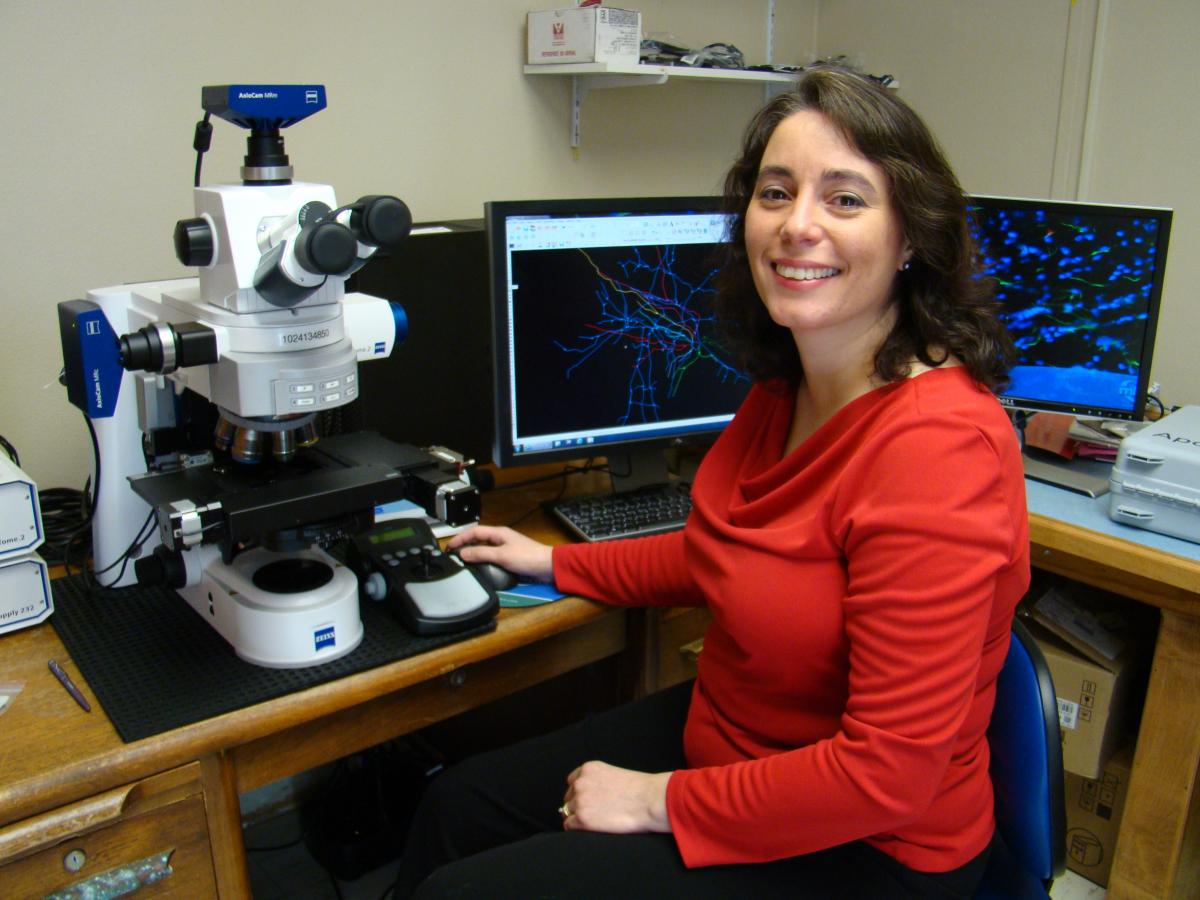
Dr. Karen Müller Smith obtained her Bachelor of Science in Cytogenetics from the School of Allied Health at the University of Connecticut in 1996. She was a Day of Pride Scholar and a University Scholar. She obtained her PhD in Genetics in 2003 from the Graduate Biomedical School of Tufts University where she worked with Bradford A. Navia, MD, PhD, on the genetics of Attention Deficit Hyperactivity Disorder. She was selected for a highly competitive NIMH Postdoctoral Training Program (T32) in Childhood Neuropsychiatric Disorders. She was mentored by Dr. Flora Vaccarino. During this time, Dr. Smith continued her training in Neurobiology. Her studies included elucidating the role of Fibroblast Growth Factor Receptor Genes in neurodevelopment including both cortical and cerebellar brain development, and their impact upon on behavior. Dr. Smith was also the recipient of the 2005 James Hudson Brown-Alexander Brown Coxe Fellowship. In 2009, she received the NARSAD Young Investigator award from the Brain Behavior Research Foundation and a K01 Mentored Research Career Development Award from the NIMH. In 2012, she became an Assistant Professor in the Department of Biology at the University of Louisiana at Lafayette. In 2019, she was promoted to Associate Professor. Dr. Smith has been the recipient of Louisiana Board of Regents funding as a co-investigator as well as a principal investigator. Her laboratory continues to study the role of Fibroblast Growth Factor Signaling in brain development, astrocyte-neuron interactions, and behavior. She has collaborated with researchers at the NIRC to study the role of endogenous opioid receptors and ligands in Self Injurious Behaviors, and with researchers at the Louisiana Accelerator Center to study the effects of radiation upon glial cells. She has mentored 6 PhD students (4 current), 6 MS thesis students (1 current), and over 25 undergraduate students in her laboratory. She has served as a committee member for multiple Doctoral and Masters degree students. In 2021, she was awarded the Outstanding Masters Degree Mentor award.
Spring 2021
SIMM - March 2021
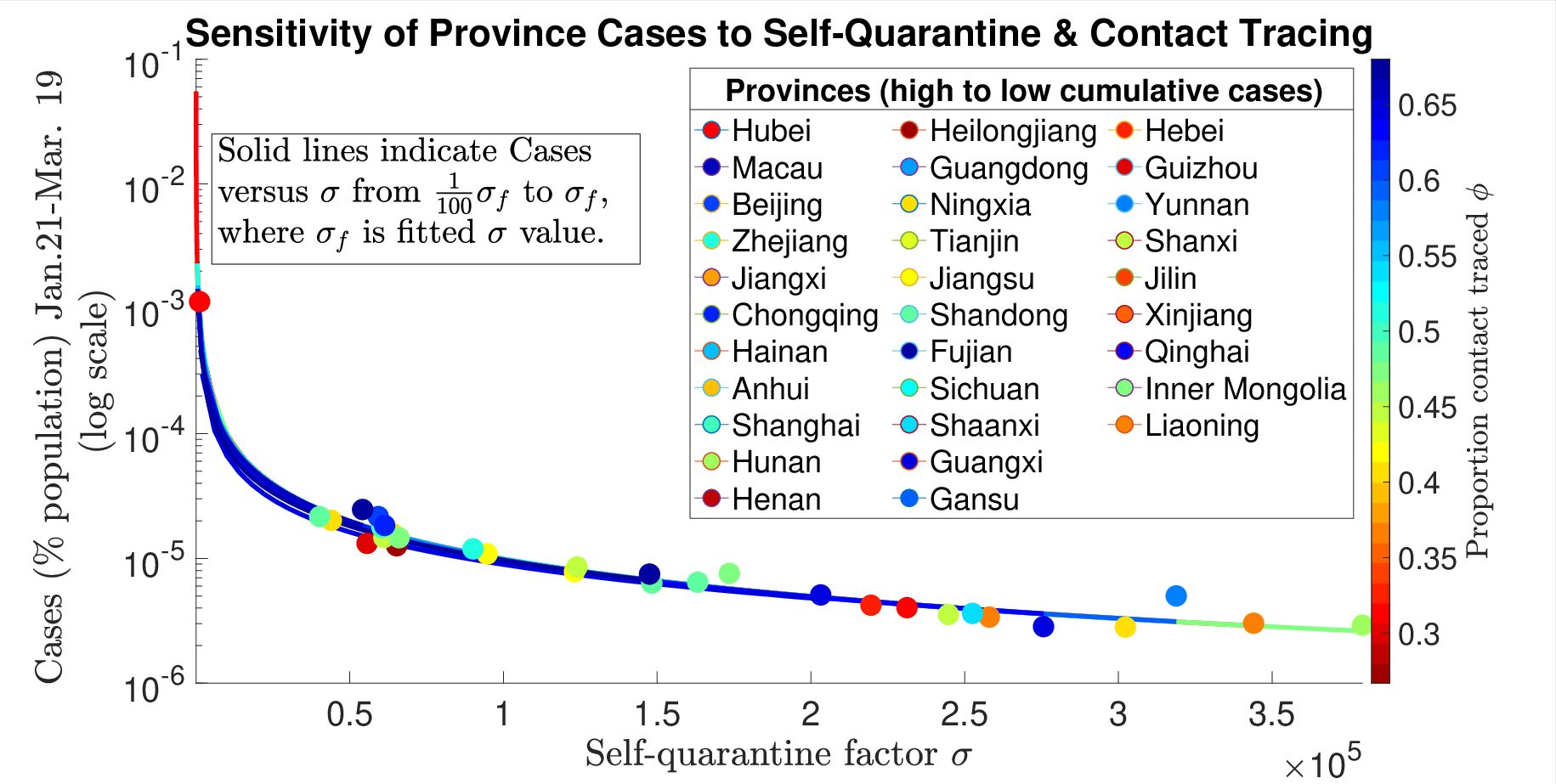
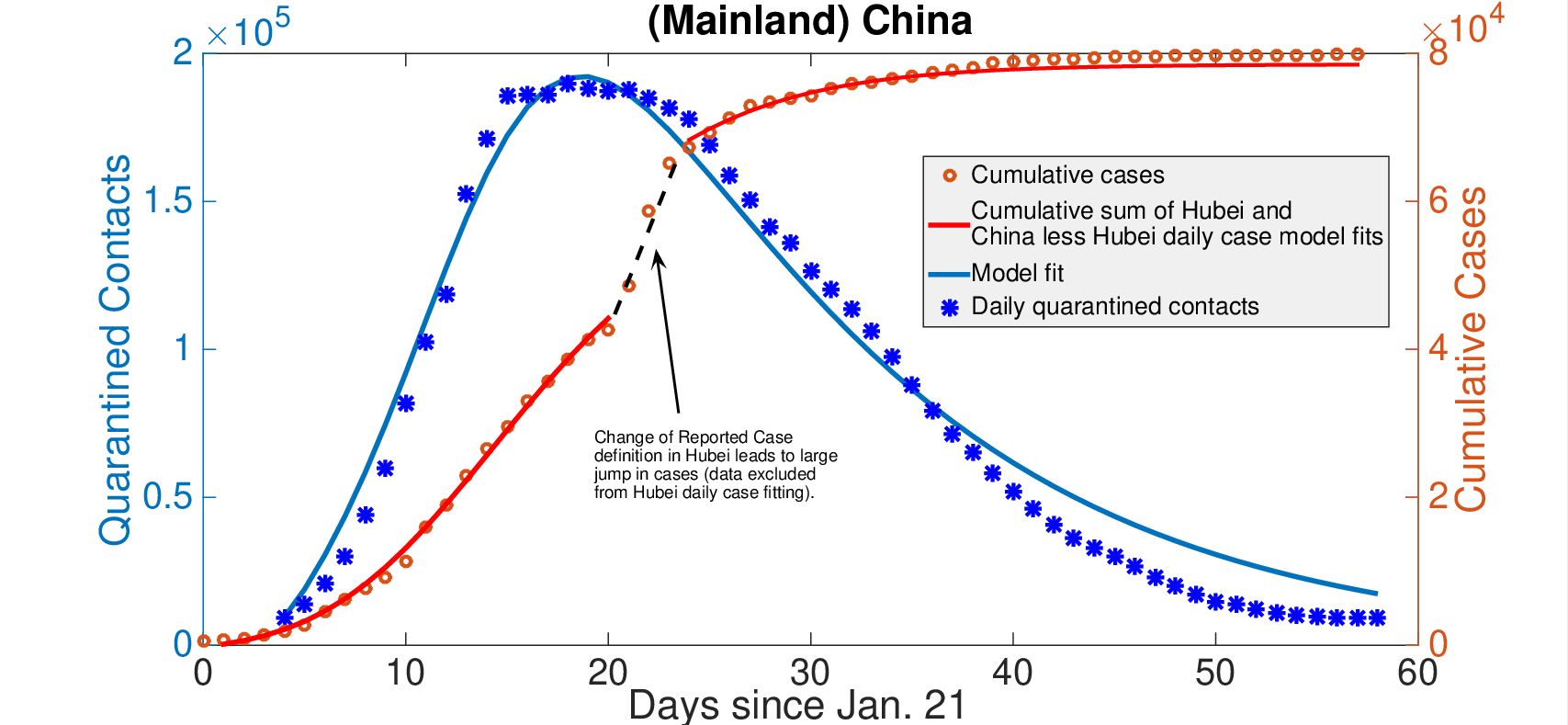
Modeling lockdowns, contact tracing and testing in COVID-19 outbreaks applied to China and United States
Cameron Browne
Mathematics Department, UL Lafayette
3:30 - 5:00
Tuesday, 16 March 2021 ON ZOOM
Zoom Time: 16 March 2021 03:30 PM Central Time (US and Canada)
Please send us a request if you wish to join this Zoom meeting.
Abstract
The COVID-19 pandemic has led to widespread attention given to the notions of "flattening the curve" during lockdowns, and successful contact tracing programs suppressing outbreaks. However, a more nuanced picture of these interventions' effects on epidemic trajectories is necessary. By mathematical modeling each as different reactive quarantine measures, we derive distinct nonlinear effects, in particular an inverse proportionality relation between outbreak size and lockdown rate. We apply the model to two countries with quite different COVID-19 responses: China and United States. In China, with use of daily number of quarantined contacts, we show the heavy influence of rapid lockdowns in comparison to a large effort of contact tracing. In the US, each state exhibited a unique response to the COVID-19 outbreak, along with variable levels of testing, leading to different actual case burdens in the country. We fit our simple unified model to case, mortality, and testing data for each US state/territory in order to correlate epidemic severity with first wave intervention attributes, such as lockdown entry/exit rate and case detection, and suggest potential management strategies for future outbreaks.
About the speaker
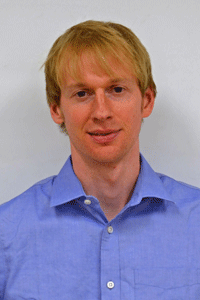
Cameron Browne joined the UL Lafayette faculty in 2015 as assistant professor in the Department of Mathematics. He received his PhD in mathematics from University of Florida (2012). He has held postdoctoral positions at University of Ottawa (2012-2013) and at Vanderbilt University (2013-2015). His research interests are in Mathematical Biology, Mathematical Modeling, Differential Equations and Dynamical Systems. He is currently focused on the dynamics of virus and host immune response, connecting population dynamics, genetics and evolution, and control of outbreaks. He has received funding from the Simons Foundation and NSF, including a recent NSF RAPID award to study epidemiological and phylogenetic models of COVID-19.
SIMM - February 2021
Machine Learning: Fundamentals and Applications from An Interdisciplinary Perspective
Miao Jin,
School of Computing and Informatics, UL Lafayette
3:30 - 5:00
Tuesday, 23 February 2021 ON ZOOM
Zoom Time: 23 February 2021 03:30 PM Central Time (US and Canada)
Please send us a request if you wish to join this Zoom meeting.
Abstract
Machine learning, considered the core of artificial intelligence, is a tool for turning information into knowledge. It is undeniably one of the most influential and powerful technologies in today’s world. More importantly, we are far from seeing its full potential. This presentation will briefly introduce some basic concepts and fundamental ideas of machine learning. I will also describe recent machine learning-guided explorations I have been involved with.
About the speaker
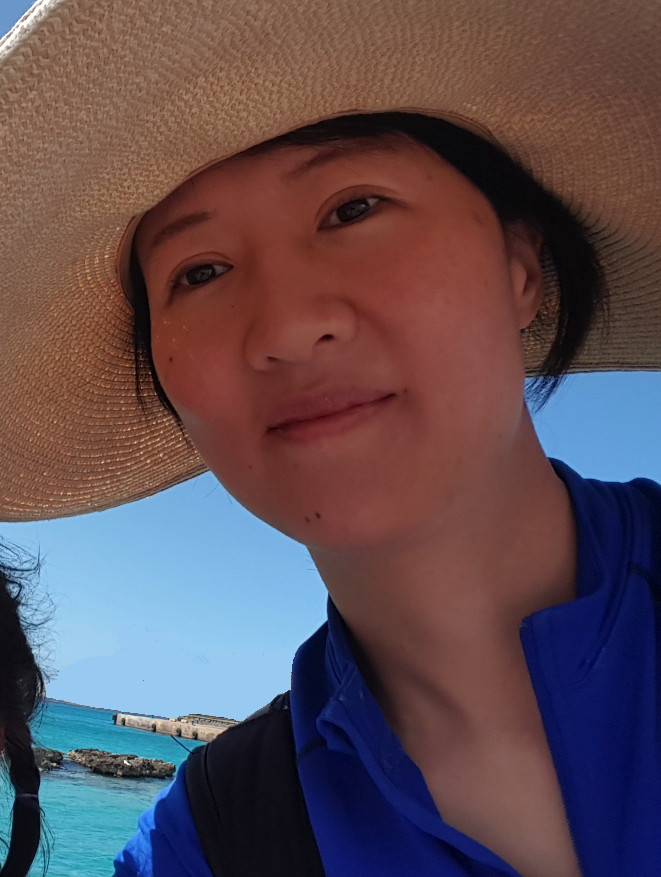
Miao Jin is associate professor in the Center for Advanced Computer Studies here at UL Lafayette. She received the B.S. degree in computer science from Beijing University of Posts and Telecommunications, Beijing, China, in 2000, and the M.S. and Ph.D. degrees in computer science from the State University of New York at Stony Brook, in 2006 and 2008, respectively. Her research interests lie at the boundary of geometry and broad engineering fields including Mobile and Wireless Networks, Computer Vision, Computer Graphics, and Machine Learning. Her research results have been used as cover images of mathematics books and licensed by Siemens Healthcare Sector of Germany for virtual colonoscopy. She received Best paper award in CAD/Graphics in 2007, NSF CAREER Award in 2011, Jack & Gladys Theall/BoRSF Professorship in 2013, Lockheed Martin Corporation/BoRSF Professor in 2016, and UL Lafayette College of Science Research Award in 2020.
Fall 2020
This semester we are looking forward to three internal speakers. On 22 September 2020 Manavi Jadhav of our physics department will speak, on 20 October 2020 Scott France of our biology department will speak, and on 17 November 2020 Jorge Villa of our school of geosciences will speak. Due to the ongoing pandemic we anticipate that all of the talks will be presented via Zoom. Please join us for these seminars!
SIMM - November 2020
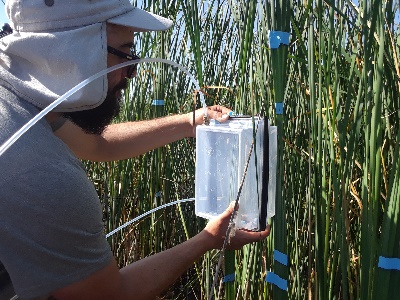
Wetlands, methane, and climate change: moving beyond the single patch-type denomination in wetland models
Jorge A. Villa, School of Geosciences, UL Lafayette
3:30 - 5:00
Tuesday, 17 November ON ZOOM
Zoom Time: November 17, 2020 03:30 PM Central Time (US and Canada)
Please send us a request if you wish to join this Zoom meeting.
Abstract
Wetlands are the single-largest natural source of methane emissions, a potent greenhouse gas. Paradoxically, methane emissions from wetlands remain largely unconstrained, as indicated by the significant differences between inverse modeling approaches and scale-up of bottom-up biogeochemical modeling approaches. Uncertainty in modeling approaches is mainly attributed to differences in modeling structure and parameterization, which typically represent poorly the natural heterogeneity of wetland ecosystems. Instead of a single patch or land cover, wetland ecosystems encompass a collection of distinct patches representing similar water levels and plant species or communities.
This presentation will feature studies conducted at a freshwater temperate coastal wetland highlighting how methane flows through various patches at different rates. Also, will show how lessons learned from these studies are being used to structure and ground the emerging Wetland Ecosystem Science Lab at the School of Geosciences.
About the speaker
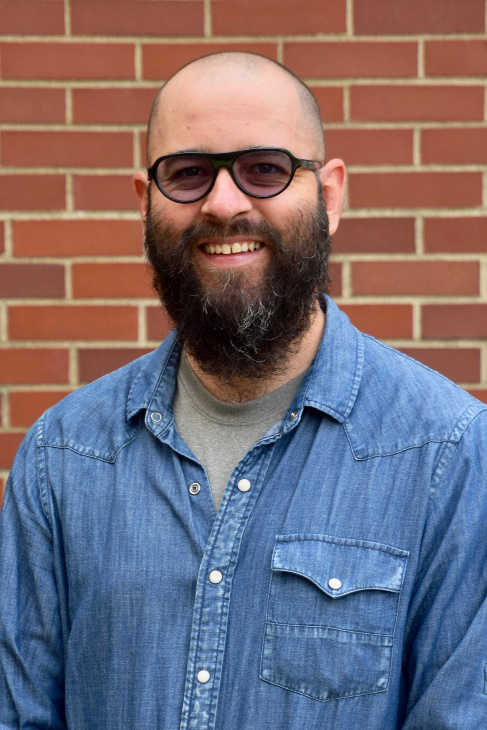
With a background in Environmental Engineering and an MS in Forests and Environmental Conservation, he completed his PhD in 2014 in Environmental Sciences at Ohio State University, studying carbon dynamics in Florida's subtropical wetlands. After his PhD, he taught for four years at a private institution in Colombia while studying mountain and lowland tropical wetlands. Since 2018, he rejoined Ohio State working as a Visiting Research Assistant Professor at the Department of Civil, Environmental, and Geodetic Engineering, before landing at Lafayette this January.
As a self-described wetland scientist, Jorge holds a keen interest in studying wetland ecosystem functioning and how data can be used to manage these systems more ecologically. He is particularly interested in how the interplay between plants, soils, and water affects wetland carbon sinks and sources. His overall goal is to provide stakeholders with quantitative information practical in decision-making processes and modelers with data from field-driven experiments useful for parameterizing biochemical models.
SIMM - October 2020
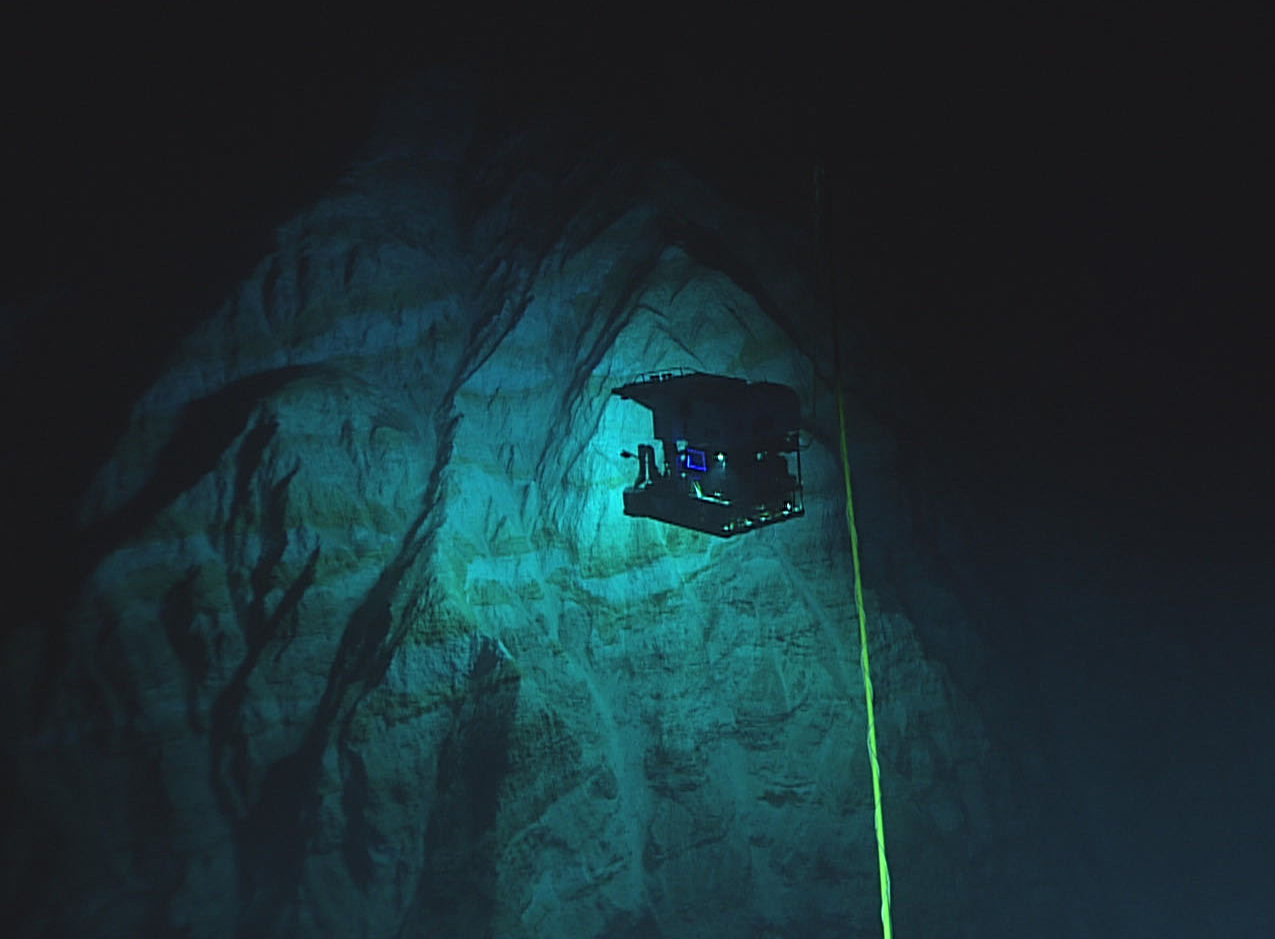
Exploration and mapping of the deep ocean
Scott France, Department of Biology, UL Lafayette
3:30 - 5:00
Tuesday, 20 October 2020 ON ZOOM
Zoom Time: October 20, 2020 03:30 PM Central Time (US and Canada)
Please send us a request if you wish to join this Zoom meeting.
Abstract
Sixty-three percent of the Earth’s surface is submerged in ocean depths greater than 200 meters – the “deep sea” – but only a small percentage of the deep ocean has been well explored. Prior to the pioneering publication of the World Ocean Floor Map in 1977 by Bruce Heezen and Marie Tharp, almost nothing was known about the topography of the seafloor. Rather than being flat, their map revealed a dynamic environment, with a globe-circling chain of mountains running through the middle of the ocean and numerous isolated volcanoes (“seamounts”).
And yet today we still know relatively little about the details of the deep seafloor and the extent of its biological communities. Only about five percent of the global ocean has been mapped by modern multibeam sonar systems; background seafloor layers used in map software like Google Earth come from low-resolution altimeter data, meaning seafloor features smaller than 1.5 km scale may be missed. Even less of the deep sea has been visually examined (using submersibles or remotely operated vehicles), leaving many open questions about biological diversity and biogeography.
This presentation will highlight recent deep-sea exploration expeditions I have been involved with. I will describe the NOAA Ship Okeanos Explorer program, “the only federal vessel that systematically explores the ocean to collect deep-sea baseline environmental intelligence” and how you and your students can get involved. I will also touch on the last major deep-sea expedition I sailed on (pre-COVID-19!), to the remote Emperor Seamount Chain in the northwestern Pacific Ocean.
About the speaker
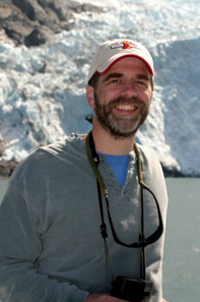
Scott France holds the Mr. Charles R. Godchaux/BORSF Professorship in Coastal Biodiversity Research Development and is Graduate Admissions Coordinator in Biology at UL Lafayette. Scott earned his B.S. in Biology at Concordia University (Montreal, Canada) in 1986 after having started as a fine arts major, switching streams when he was captivated by the discovery of deep-sea hydrothermal vents. That new knowledge drove his desire to visit and explore the deep sea himself. He received his PhD in Oceanography from the Scripps Institution of Oceanography, University of California, San Diego, in 1992. He held postdoctoral positions at the Woods Hole Oceanographic Institution, the University of New Hampshire, and Harvard University, and taught Evolution at Bowdoin College. He was on the faculty of the College of Charleston, from 1997-2003, before joining the Department of Biology at UL Lafayette in January 2004. In 2013 he was named the Ray P. Authement College of Sciences Outstanding Professor. Over his career, he has been on more than 20 research cruises and visited the deep-ocean floor off the Mariana Islands, Hawaii, Galapagos, the equatorial central Pacific, the Emperor Seamount chain, California, Bahamas, and the western North Atlantic, and has analyzed genetic variation of deep-sea invertebrates from a variety of habitats, including hydrothermal vents, abyssal plains, seamounts, canyons, and trenches. Scott has published more than 45 peer-reviewed articles, and written many science blogs and magazine and encyclopedia entries. He has directed the theses and dissertations of 5 MS students and 7 PhD students and has served on more than 22 MS and 30 PhD graduate student committees. Since 2017 he has served as science advisor for the NOAA Ship Okeanos Explorer’s Atlantic and Gulf of Mexico operations.
SIMM - September 2020
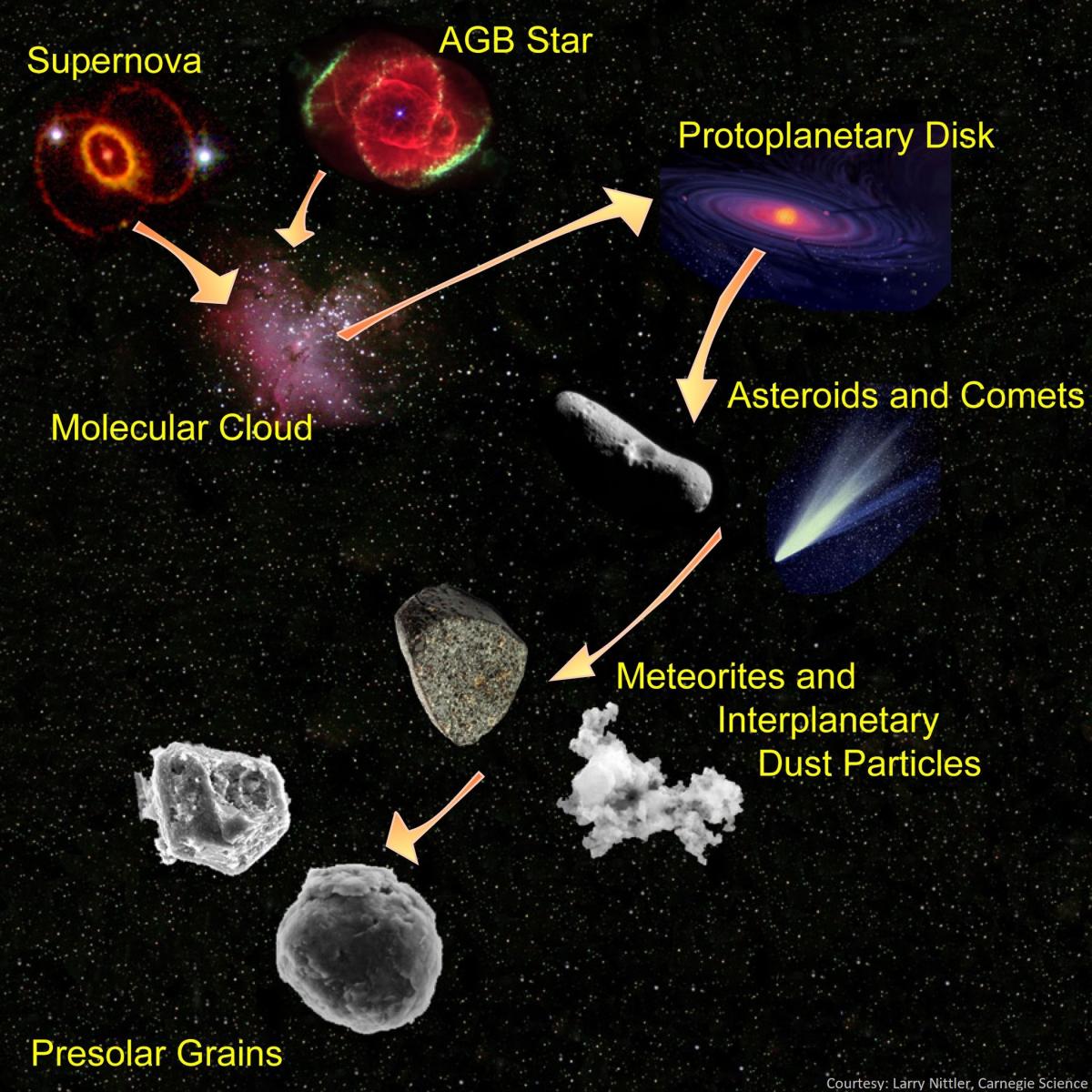
Laboratory investigations of stardust and other extraterrestrial materials
Manavi Jadhav, Department of Physics, UL Lafayette
3:30 - 5:00
Tuesday, 22 September 2020 ON ZOOM
Zoom Time: Sep 22, 2020 03:30 PM Central Time (US and Canada)
Please send us a request if you wish to join this Zoom meeting.
Abstract
The laboratory study of stardust is an important sub-field of astrophysics. It combines sophisticated chemical, structural, and isotopic laboratory measurements, on micron-sub-micron stardust particles, with the theoretical ideas of nucleosynthesis and stellar evolution that exist to understand astrophysical observations. Isotopic data for these grains reveal more precise information about their parent stars than do spectroscopic observations of circumstellar dust. The goal of laboratory measurements is to provide clues on the stellar environments in which the grains formed and on their subsequent histories. Additionally, investigations into the preservation of these grains in different meteorites provide information about early solar system conditions and chronology. These goals can be achieved by coordinated, multi-technique investigations of stardust grains in the laboratory.
This talk will focus on some key results from coordinated, multi-technique measurements of stardust grains and what they tell us about the stars that contributed presolar materials to our nascent Solar System. I will also talk about other new laboratory investigations of extraterrestrial samples.
About the speaker
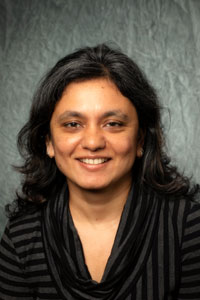
Manavi Jadhav received her BSc and MSc in Physics from the University of Pune in India in 1996 and 1999. In 1999, she moved to Ohio University in Athens, Ohio to pursue a PhD in Physics/Astrophysics but instead got MS's in Physics and Geophysics and decided to shift into the field of Planetary Sciences. Dr Jadhav received her PhD in Earth and Planetary Sciences from Washington University in St. Louis in 2009. Her postdoctoral work took place at the University of Hawai`i at Mānoa (2010 - 2014) and the University of Chicago (2014 - 2015). During this time, she was a research affiliate with the Robert A. Pritzker Center for Meteoritics and Polar studies at the Field Museum of Natural History. Dr Jadhav was a Visiting Assistant Professor at the Physics Department at UL Lafayette in 2015-2016 and was appointed Assistant Professor in the same department in 2018.
In the austral summer of 2013-2014, she was a deep-field expedition member of the 2013-2014 Antarctic Search for Meteorites (ANSMET) for which she received the NSF Antarctic Service Medal in 2014.
Dr Jadhav is a cosmochemist and planetary scientist. Her work focuses on deciphering the origins of stardust or presolar grains found in primitive meteorites that allows us to learn more about the origins of our solar system and other planetary systems. On a broad level, she is interested in adapting and developing new micro- and nano-analytical techniques to study extraterrestrial materials that allow her to study these materials at the microscopic level to help understand the solar system and stellar objects on an astronomical scale. When not teaching or doing research, she is keenly involved in organizing and participating in STEM outreach events at all levels.
Spring 2020
This semester we are looking forward to two internal speakers and one visitor. On 18 February 2020 Tolga Karsili of our chemistry department will speak, on 24 March 2020 James Albert of our biology department will speak, and on 21 April 202 we will have a special guest for the Herman D. Hughes Distinguished Lecture. Please join us for these seminars!
SIMM - April 2020

What is Life?
Resolving Schrödinger's Paradox
James Albert, Department of Biology, UL Lafayette
3:30 - 5:00
Tuesday, 21 April 2020 ON ZOOM
see the ZOOM details below
Time: Apr 21, 2020 03:30 PM Central Time (US and Canada)
Please send us a request if you wish to join this Zoom meeting.
Abstract
"Living matter, while not eluding the 'laws of physics' as established up to date, is likely to involve 'other laws of physics' hitherto unknown." (Schrödinger 1944:68).
In their explorations of Mars and other extraterrestrial bodies, NASA scientists have developed a working definition of Life as: A self-sustaining chemical system capable of Darwinian evolution. This definition refers to the theory of biological evolution that all species of organisms arise from pre-existing species, by means of changes in the genetic program that descendants inherit from their ancestors. This working definition allows for a wide range of potential life forms, yet does not provide a simple test for Life as we are unlikely to observe Darwinian evolution taking place. Here I combine concepts and data from several areas of the Natural Sciences, to derive a consilient answer to the question: “What is Life?” I provide an ontological description of the Life phenomenon as we know it on Earth, from the hierarchical perspective of Evolutionary Systems Theory and Unified Information Theory. Under this view all biological processes are also chemical and physical processes, and thereby conform to all chemical and physical laws of nature. From these sources I derived a definition of Life as an: enzymatically-mediated autocatalytic systems that propagate itself using free energy under the dynamic kinetic control of inherited information. I show how this conception of Life is equivalent to the NASA working definition cited above, because Darwinian evolution refers to changes in information-bearing molecules and the metabolic reactions they control.
About the speaker
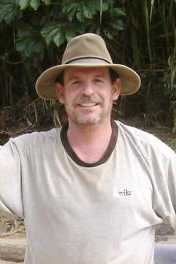
Dr. James Albert is an endowed professor of Biology at the University of Louisiana at Lafayette, with more than 30 years of experience collecting and documenting tropical fish diversity. To date and with his colleagues, Dr. Albert has 134 peer-reviewed publications (GS >5,000 citations, h-index 37) in the areas of Evolutionary Biology, Biogeography, Systematic Ichthyology, and Tropical Conservation Biology. These publications include descriptions of more than 50 species and 11 genera new to science. Dr. Albert received his B.S. from UC Berkeley, MSc & PhD from Univ. Michigan at Ann Arbor, held faculty positions at the Nippon Medical School in Tokyo and Univ. Florida Gainesville, and started on the UL Lafayette faculty in 2005. Dr. Albert serves on the editorial boards of three scientific journals, has been PI on five multi-investigator NSF awards, and has edited three books on the diversity and evolution of Amazonian fishes. Dr. Albert also has a forthcoming book on the ecology of tropical fishes from the Americas.
SIMM - February 2020
Modelling the Chemistry and Photophysics of Tropospheric Oxidants - a Bottom-Up Approach to Atmospheric Modelling
Tolga Karsili, Department of Chemistry, UL Lafayette
3:30 - 5:00
Tuesday, 18 February 2020
Oliver Hall auditorium (room 112)
Abstract
Climate change is one of the most significant global challenges of the twenty-first century. The abundance of volatile organic compounds (VOCs) in the troposphere have led to severe atmospheric implications. Alkenes are a subset of anthropogenic and biogenic VOCs that are the second most abundant in the troposphere – after methane. They play a significant role in enhancing the oxidizing capacity of the troposphere and are a significant source of nucleation of particulates and for the growth of secondary organic aerosols (SOAs). Much of these atmospheric consequences arise via the oxidation of alkenes.
The major tropospheric alkene removal process is via ozonolysis, wherein the reaction of a given alkene with ozone forms a carbonyl oxide intermediate – known as the Criegee Intermediate (CrIs). CrIs are formed with excess internal energy and thus may undergo further reactions, such as unimolecular decay or isomerization. Alternatively, the highly vibrationally excited CrI may undergo vibrational energy relaxation through collisions with proximal molecules. The stabilized CrIs can then undergo unimolecular decay, react with several trace atmospheric species or may undergo UV-excitation. Theoretical and computational chemistry offers a deep mechanistic interpretation of these three major atmospheric loss processes of stabilized CrIs.
The first part of my seminar will focus on a recently developed discrete Hamiltonian matrix, that is used to systematically study the full-dimensional time-dependent quantum dynamics associated with the unimolecular and bimolecular (photo)chemistry of a CrIs with varying molecular complexity, under atmospheric conditions. Mixed quantum mechanics/molecular mechanics methods are then used to compute the mechanisms and rate constants associated with the bulk reactivity of CrIs with trace atmospheric molecules (H2O, NO3, and SO2) to form SOAs and particulates. The returned mechanistic insights, reaction yields and associated rate constants will form the basis for training a recently developed machine learning algorithm, capable of predicting the future global oxidizing capacity of the troposphere, as well as future trends in VOC-induced variations in global temperature.
About the speaker
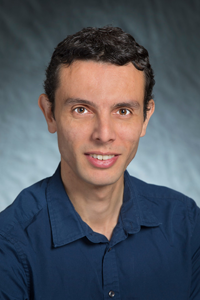
Tolga Karsili joined the faculty of the Department of Chemistry at UL Lafayette in 2018, where he is an assistant professor. He grew up in London, United Kingdom. Tolga received his Ph.D. in Chemistry from the University of Bristol (UK) in 2014. He then undertook post-doctoral research at the Technical University of Munich (Germany) between 2014-2016 and at Temple University (USA) between 2016-2018.
Tolga’s research focuses on developing and using high-level electronic structure and time-dependent dynamics methods for studying (1) energy transfer processes in biological chromophores in complex environments, (2) the multi-molecular dynamics of atmospherically relevant molecules, (3) the mechanistic studies of surface-assisted and organometallic catalysis for drug design and biomass energy conversion, and (4) the optical properties of bioinspired materials.
Fall 2019
SIMM - November 2019
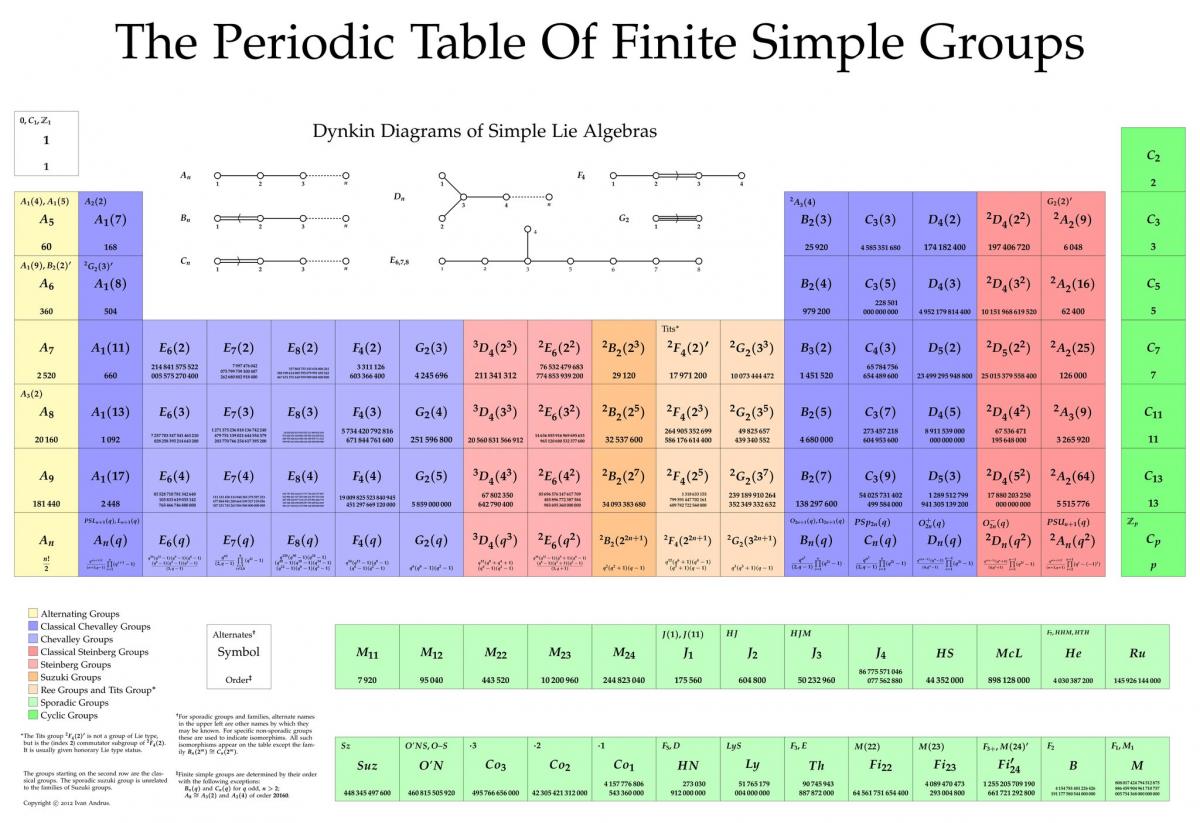
Finite symmetry around a prime
Justin Lynd, Department of Mathematics, UL Lafayette
3:30 - 5:00
Tuesday, 19 November 2019
Oliver Hall auditorium (room 112)
Abstract
A group is a set consisting of the symmetries of an object (that is, movements of the object back onto itself which preserve the structure of the object) together with a multiplication which arises from "doing one movement after the other". A group is said to be finite if it contains a finite number of symmetries. One of the greatest achievements of 20th century mathematics was the classification of the finite simple groups, the "atoms" of finite symmetry.
Rather than start from an object and think about its group of symmetries, one can also start from an abstract group G and try to think about all objects of a given type that have G as a group of symmetries. This is the subject of group representation theory, especially when the objects of interest are vector spaces, and the symmetries are invertible linear transformations.
Because of its origins within geometry, the theory of groups has close connections with geometry's modern incarnation, topology, in which two shapes (or "spaces") are considered the same if one can be continuously deformed into the other. Each group has a universal space associated with it, its classifying space, whose deformation properties mirror the algebraic properties of the group. One curious fact, however, is that a finite group with more than one symmetry always has an infinite dimensional classifying space.
Coinciding almost exactly with the completion of the classification of finite simple groups (2000-2004), a new area of study has emerged in which one throws away all information about a finite group except what can be seen around a prime p, analogous to studying a molecule using only what can be gathered from a particular range of the electromagnetic spectrum. In this talk I will describe new examples of partial symmetry that have come to light from this approach, explain new connections with topology, and try to indicate this area's potential to help give insight into long-standing conjectures in the representation theory of finite groups.
About the speaker
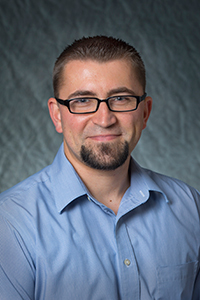
Justin Lynd joined the faculty of the Department of Mathematics at UL Lafayette in 2017, where he is an Assistant Professor. He grew up in southern Ohio along the rolling foothills of the Appalachian Mountains. Justin received the Ph.D. in Mathematics from Ohio State in 2012, where he was a Presidential Fellow in 2011. Afterward, he served as Triennial Assistant Professor at Rutgers University from 2012-2015, as a Visiting Assistant Professor at the University of Montana from 2015-2016, and as a Marie Curie Research Fellow at the University of Aberdeen from 2016-2017. His work in pure mathematics has been supported under grants from the NSA, the European Commission, the Louisiana Board of Regents, and the NSF.
Justin's research concerns the structure of finite groups, particularly around a prime. He is especially interested in how the localizations of finite groups at a prime influence associated structures in topology and in modular representation theory.
SIMM - October 2019
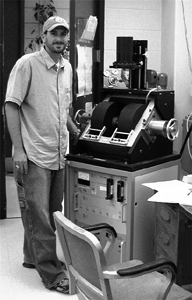
Scientists too can play instruments
Eric C. Ferré, School of Geosciences, UL Lafayette
3:30 - 5:00
Tuesday, 15 October 2019
Oliver Hall auditorium (room 112)
Abstract
When I look at the factors determining success in my area of science, it is clear that access to cutting-edge instruments is crucial. Researchers at tier 1 research universities tend to build their careers on results obtained through these advanced analytical capabilities. They also enjoy plentiful opportunities for collaboration with colleagues who do not have access to similar facilities, opportunities often leading to collaborative publications. Graduate students also often need analytical methods that are not available on their own campuses. Finally, the development of new directions of research and major breakthroughs in science often result from time-consuming and iterative experiments or measurements that simply cannot be accomplished when one visits a distant analytical facility. Here I make the case that scientists in our College of Sciences need to pursue instrumentation grants in an aggressive and systematic fashion. I provide real-life examples on how the acquisition of an instrument from NSF funds at an early stage of my career in the US changed the course of my professional life and gave me incomparable opportunities to advance my research.
The instrument I acquired through funding from the MRI program is a vibrating sample magnetometer, a device that uses strong direct magnetic fields to investigate the magnetic hysteresis properties of materials, such as rocks in my case. This type of instrument is commonly used in material sciences to research the magnetic properties of semi-conductors. I use this instrument to identify the nature and abundance of minerals in rocks, as well as their magnetic grain size and their orientation within the rock.
The research that I have conducted since 2005 using this instrument has led to the publication of over 50 peer-reviewed articles, have supported the graduate research of more than 25 graduate students, and contributed to four subsequent NSF grants. In this seminar, I show how these results contribute to our understanding of what is magnetic in the Earth’s mantle, how large deposits of platinum and palladium form, and what happens magnetically during large magnitude earthquakes.
About the speaker
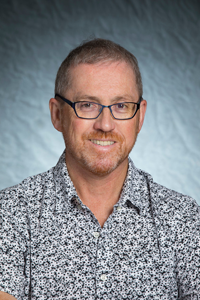
Eric Ferré, PhD, joined the University of Louisiana at Lafayette as professor and director of the School of Geosciences in August 2018. He grew up in the Southern, sunny, part of France in a small town near Toulouse and went to college at Université Paul Sabatier, also in Toulouse, where he earned his Honors BSc in 1984, MSc in 1985, PhD in 1989, and Habilitation in 2000. Dr. Ferré held academic positions at Rhodes University, Grahamstown, South Africa (1996-2001), the University of Wisconsin, Madison (2001-2002) and Southern Illinois University, Carbondale (2002-2018).
Dr. Ferré's current research focuses on deformation of the Earth's lithosphere, both in oceanic and continental settings, both at the geologically slow and seismically fast timescales. His main tools for addressing scientific questions are rock magnetism and paleomagnetism.
SIMM - September 2019
Streaming Graphs: A New Paradigm for Big Data Streams
Vijay V. Raghavan, School of Computing and Informatics, UL Lafayette
3:30 - 5:00
Tuesday, 17 September 2019
Oliver Hall auditorium (room 112)
Abstract
Huge amounts of real-time information are generated from a great variety of sources such as mobile/web applications, e-commerce, social networks, or sensor networks. Currently popular data management approaches and frameworks to extracting and understanding patterns from multiple streams take a simplistic view of the data, which ignores multi-relational and multi-dimensional characteristics associated with these streams. Furthermore, the visualization and user-interaction components of these systems are limited to visualizing the outcome of stream processing results. Visual analysis represents a new form of analysis where the user has more control and interactive capabilities either to dynamically change the visualization, analytics or data management processes. Applying visual analysis to such data streams presents many benefits such as automated analysis and interactive visualization. VAStream, established at UL Lafayette via an NSF- MRI award, is a big data system that provides both a big data stream processing platform along with more interactive visualization capabilities. The system environment consists of hardware and software modules to optimize streaming data workflow (that includes data ingest, pre-processing, analytics, visualization, and collaboration components).
Topic detection methods, when applied to text streams from social media, can automatically recognize the onset of new events by modeling them as emerging topics of interest in these conversations. This is very useful for situations such as public safety incidents or mass emergencies, where events are dynamic and early detection is desirable. Similarly, during emergencies, like hurricanes, information is flooded from a wide variety of sources and decision makers should be able to identify emerging trends and patterns, such as water level in river streams, for effective response. Recent research at the NSF-sponsored Center for Visual and Decision Informatics (CVDI), a multi-institutional Industry University Cooperative Research Center (IUCRC), takes a robust strategy by modeling such complex data as time-evolving graph data streams. In this presentation, we introduce the system architecture of VAStream in terms of hardware, and software modules. We also elaborate on our work in the context of the two above-mentioned streaming applications, to demonstrate our overall visual analytics approach and to present experimental findings relating to the system’s performance.
About the speaker
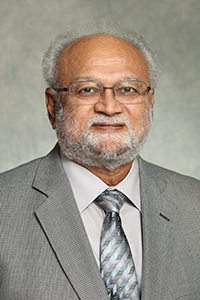
Vijay Raghavan is the Alfred and Helen Lamson Endowed Professor of Computer Science at the Center for Advanced Computer Studies, University of Louisiana at Lafayette, the Director of the Center for Visual and Decision Informatics, a multi-institutional, NSF-sponsored, Industry University Research Center (IUCRC), and a co-director of the Laboratory for Internet Computing. His research interests are in information retrieval and extraction, data and web mining, multimedia retrieval, data integration, and link discovery. He has published around 300 peer-reviewed research papers, has served as major adviser for 32 doctoral students and has garnered $15 million in external funding. Raghavan is an IEEE Life Senior Member and an ACM Distinguished Scientist.
Spring 2019
SIMM - April 2019
Innovating Geophysics through Data Science and Machine Learning
Gabriele Morra, Department of Physics and School of Geosciences, UL Lafayette
3:30 - 5:00
Tuesday, 23 April 2019
Oliver Hall auditorium (room 112)
Abstract
The recent decade has seen a flurry of exciting new developments and activities in many fields of science at the intersection of sensor technologies, data analytics and data assimilation. With a later start, geosciences has begun to move ahead and pick up steam in this new paradigm of data driven science. I will illustrate some problems in seismology and volcanology of how this progress is taking place, and of its impact on scientific communication, education and research in the geosciences.
About the speaker
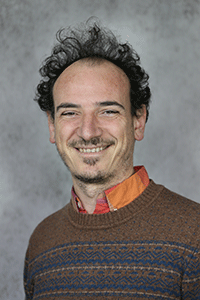
Gabriele Morra graduated in Physics at the University of Rome "La Sapienza". He moved then to ETH Zurich for a PhD in Computational Geodynamics where he developed new numerical models plate tectonics. Later, he took up a two-year postdoctoral fellowship at the Institute of Computational Sciences at the ETH, working on fast algorithms and parallel programming. He went then to the University of Roma Tre, Italy, to study large earthquakes in subduction zones. In 2009, he won a Swiss National Foundation Advanced Researcher Fellowship to move to Australia where he worked at the School of Geosciences of the University of Sydney on problems related to global geodynamics. After working two years as Research Professor at the Seoul National University, in 2013 he joined UL Lafayette where he took a joint faculty position shared between the Department of Physics and the School of Geosciences.
Herman D. Hughes Distinguished Lecture
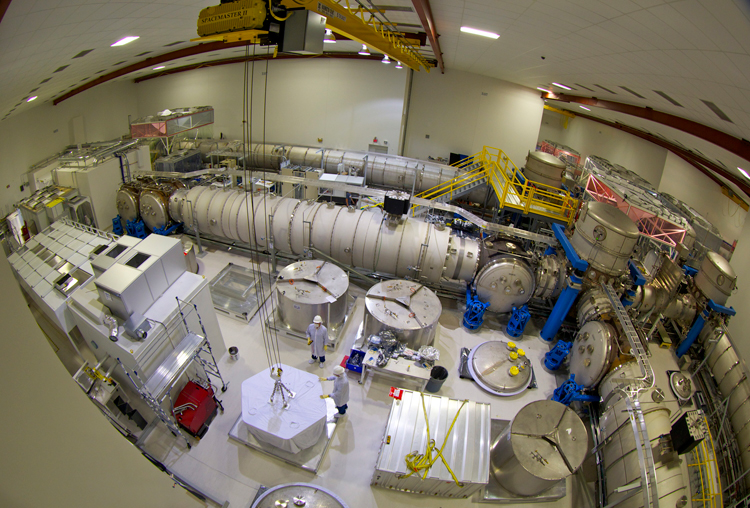
Black Holes and Gravitational Wave Detection with LIGO
Thomas Corbitt, PhD
Louisiana State University
Department of Physics & Astronomy
3:45 - 5:00
26 March 2019
Oliver Hall auditorium (room 112)
3:00 - 3:45
Reception -- meet and greet Dr. Corbitt
Oliver Hall Lobby
Abstract
In 1915, Albert Einstein published his theory of general relativity (GR), which relates gravity to the curvature of spacetime. In 1916, he predicted the existence of gravitational waves, or ripples in the fabric of spacetime, as a consequence of GR, but expected them to be too small to ever be detected. On September 14, 2015, LIGO (Laser Interferometric Gravitational-wave Observatory) detected a gravitational wave signal that originated from the coalescence of two merging black holes approximately 1.3 billion light years away. This detection confirmed Einstein’s prediction, and it marked the beginning of a new branch of astronomy. Since then, a number of gravitational waves have been detected, including some with the VIRGO collaboration, and one event with an electromagnetic counterpart. I will discuss these detections, along with the history and science behind the detectors, and describe what the future of gravitational wave astronomy may include.
About the speaker
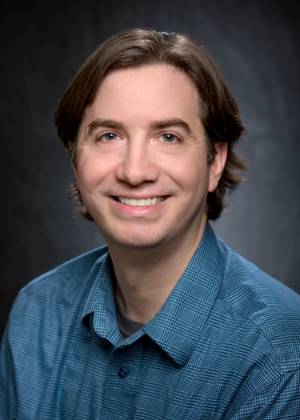
Thomas Corbitt first began working on gravitational wave detection in 2001 at the LIGO Hanford Observatory, while he was an undergraduate student at the Georgia Institute of Technology. After receiving his BS in Physics, he went on to receive his PhD from the Massachusetts Institute of Technology in 2008 under the advisement of Nergis Mavalvala, where he performed research on reducing quantum noise effects in LIGO. Corbitt joined the faculty of Louisiana State University in 2011, where he has studied experimental quantum back action noise and quantum optomechanics.
SIMM - February 2019
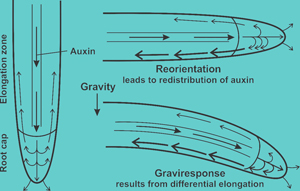
Plant proprioception – coping with gravity
Karl Hasenstein, Department of Biology, UL Lafayette
3:30 - 5:00
Tuesday, 19 February 2019
Oliver Hall auditorium (room 112)
Abstract
The talk will introduce principles of interdisciplinary aspects of physiological research. We will explore manipulations of the gravisensing process ranging from reorientation of plants on earth, the influence of magnetic forces, weightlessness and clinorotation. We will discuss the transport and function of the plant hormone auxin in the context of the graviresponse and derive a model for gravisensitivity. Technologies for gene expression studies and preparations of future experiments on the International Space Station will be used to describe the complexities of space research, and difficulties for corresponding ground controls, and the resilience of plants as essential element for space exploration.
About the speaker
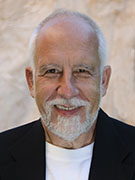
Karl Hasenstein obtained his undergraduate and graduate education in Germany and had post-doctoral training at San Diego State University and Ohio State University in Columbus, OH. He joined UL Lafayette in 1988 and studies cell- molecular- and space biology. He served in various capacities including interim director of the school of geosciences and the Louisiana accelerator center. He trained 11 PhD and 6 MS students, received more than 7 million in grants and so far, published 107 peer reviewed papers.
Fall 2018
SIMM - November 2018
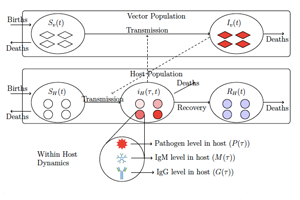
Modeling Host-Parasite Dynamics Across Scales: From Viruses of Microbes to Vector-Borne Diseases
Hayriye Gulbudak, Department of Mathematics, UL Lafayette
3:30 - 5:00
Tuesday, 13 November 2018
Oliver Hall auditorium (room 112)
Abstract
Mathematical models can help describe the dynamics of complex biological systems. An important example, which spans several biological scales, is modeling host-parasite interactions. Pathogens impact all ecosystems, from viruses of microbes (phages) to the spread of dengue virus in human populations. A better understanding of multiscale dynamics of infectious diseases or phage-microbe systems can lead to significant insights in theoretical biology, along with effective control measures against parasites that harm humans. The ecology and evolution of infectious diseases operate on several interdependent scales. However, immunology and epidemiology are traditionally treated separately in disease modeling. Here, first, I will introduce multi-scale vector-borne disease models, connecting dynamics at nested levels: from cellular infection kinetics to population level epidemics, with applications to dengue and West Nile Virus (WNV), which have challenged both researchers and public health, and suggest need for a unified immuno-epidemiological frameworks.
Next, I turn to viruses of microbes, including bacterial viruses (phage), archaeal viruses, and eukaryotic viruses, whom can influence the fate of individual microbes and entire populations. Viral infections of microbial cells often culminate in lysis and the release of new virus particles. However, viruses of microbes can also initiate chronic infections, in which replication may occur through release of new viruses or cell division. In this talk, I present a model of chronic infections as well as a model of interactions between lytic and chronic viruses competing for the same microbial population and show how the battle between two distinct viral strategies leads complex dynamics and interesting biological implications. Both examples showcase how analytical methods such as stability analysis, along with numerical simulation, can shed light on population models.
About the speaker
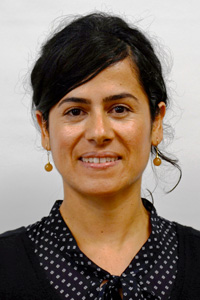
Dr. Hayriye Gulbudak joined the Mathematics Department at the University of Louisiana at Lafayette as an Assistant Professor in August 2017. Dr. Gulbudak received her PhD in mathematics in 2014 from the University of Florida. Her thesis was supervised by Dr. Maia Martcheva. She spent 2014-2016 as a postdoctoral researcher in the School of Biological Sciences and was affiliated to School of Mathematics at the Georgia Institute of Technology. From Fall 2016 through the Spring of 2017, she was a postdoctoral researcher in the School of Mathematical and Statistical Sciences at Arizona State University.
Dr. Gulbudak's research lies at the interface of Dynamical Systems, Differential Equations, Numerical Analysis, and their application to modeling biological systems. In particular, she is interested in formulation and analysis of structured population models in infectious diseases to study the ecology/evolution of pathogen-host systems. She uses bifurcation theory and studies threshold analysis along with computational approaches. For example, in recent works published in Bulletin of Mathematical Biology, she developed a structured differential equation model to analyze the dynamics and evolution of vector-borne pathogens, and fit the model to data of recent Rift Valley Fever outbreaks. This research is partially supported by National Science Foundation. Her other research has been applied to H5N1 Avian Influenza, Ebola, and phage-microbe ecosystems.
SIMM - October 2018
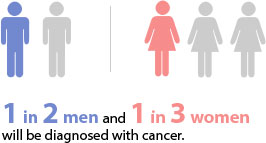
Cancer and Copper(II) Complexes as Potential Anticancer Agents
Salah S. Massoud, Department of Chemistry, UL Lafayette
3:30 - 5:00
Tuesday, 16 October 2018
Oliver Hall auditorium (room 112)
Abstract
In this talk, I will shine the light on cancers: origin of cancers, different kinds of tumors, types of common cancers and symptoms as well as stages of cancer progress. The leading causes of death in the world and most causes of death by different kind of cancers will addressed. Cisplatin as it is most widely used drug in the fight against different cancers, its discovery, cytotoxicity, and how it is working, its side effects, and the second and third generation of the drug will also addressed. The emergence of copper complexes into this area of research as potential anticancer agents and their possible use as alternative compounds for platinum drugs was based on the assumption that copper is an essential biological metal ion for life.
A novel series of Copper(II) complexes, [Cu(L)Cl]ClO4/PF6 based on pyrazolyl and pyridy tripodal tetraamine ligands (L) were synthesized and structurally characterized. The cytotoxicity of the complexes was investigated against human cancer cell lines: A2780 (ovarian), A2780R (cisplatin-resistant variant), HOS (aggressive bone tumors), CaCo2 (epithelial colorectal adenocarcinoma) and on healthy human hepatocytes (HH). One of the studied complexes revealed excellent toxicity, with IC50 = 1.4 µM (A2780), 8.3 µM (A2780R), 4.7 µM (HOS) and 10.8 µM (CaCo2) which are even more effective than those observed in cisplatin.
About the speaker
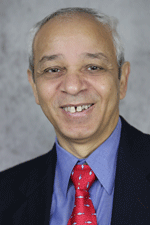
Salah Massoud is a professor of chemistry at UL Lafayette. Massoud received his BSc and MSc from Alexandria University, Egypt and PhD from Boston University. He had postdocs at Basel University (Switzerland), and University of Alberta (Edmonton, Canada). He has been visiting professor at Boston, Kuwait, Ohio and Houston Universities. He has published more than 140 papers in reputed and peer-reviewed journals, more than 60 presentations in National and International Meetings and he has been serving in the Editorial board committees in a number of journals (Magnetochemistry Journal, Journals of Advances in Chemistry, Modern Chemistry and Applications (JMCA), Dataset Papers in Materials Science).
He joined the Chemistry Department at UL Lafayette in 2002 and since then he mentored more than 80 students in undergraduate research courses. His research interest is focused on bioinorganic chemistry and material sciences. In addition to his collaboration with most colleagues in the Chemistry Department at UL Lafayette, he has very active international collaboration with colleagues at Germany, Austria, Spain, Czech Republic and Japan.
SIMM - September 2018
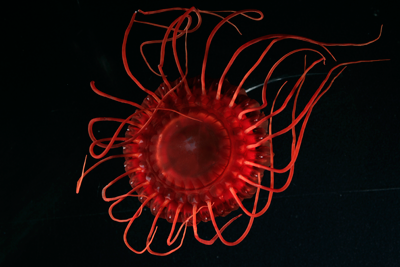
Adrift in a sea of data: zooplankton across the scales of ecosystem oceanography
Kelly Robinson, Department of Biology, UL Lafayette
3:30 - 5:00
Tuesday, 18 September 2018
Oliver Hall auditorium (room 112)
Abstract
The Robinson Marine Zooplankton Ecology Lab focuses on biological oceanography. We seek to understand how zooplankton (i.e., 'drifting ocean animals') populations respond to climate signals, ranging from weather to long-term change, and the ecosystem-level consequences of that response. We are particularly interested in how variability in environment affect zooplankton abundance, distribution, and mediate predator-prey interactions with primary producers and plankton-consuming fish.
Driving questions include: (1) what is the long-term response of zooplankton production to climate forcing; (2) what are the biophysical drivers of fine-scale to sub-mesoscale variation in zooplankton aggregations; (3) how does variation in zooplankton community structure and production affect food web energy transfer to upper level consumers?
These questions are addressed using lab experiments, field studies, and ecological modeling. We apply novel sampling technologies like plankton imaging systems. Because these technologies produce 'big data' sets, we are interested in collaborating with scientists whose expertise in statistics, math, and data management and analytics will help us push the frontiers of ocean science.
Visit the Robinson Marine Zooplankton Ecology Lab Website for more information.
Atolla photo provided by David Shale.
About the speaker
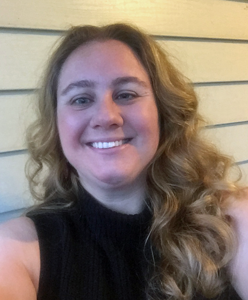
Dr. Kelly Robinson joined the Biology Department as an Assistant Professor in 2016.She received a doctorate in Marine Science from the University of South Alabama in 2012 and a Master of Science in Fisheries and Aquatic Sciences from the University of Florida in 2007. She was a postdoctoral associate at the University of Southern Mississippi from 2012 to 2014 and a postdoctoral fellow at Oregon State University from 2014-2016.
Dr. Robinson is a coastal biological oceanographer specializing in zooplankton ecology, with an emphasis on jellyfish. She has over a decade of experience studying zooplankton in the Gulf of Mexico. She has authored or co-authored 19 publications - four of which have been cited over 100 times.
Dr. Robinson is leading a collaborative NSF RAPID grant and serving as a CoPI on a Gulf of Mexico Research Initiative grant. She is also a Co-PI on the recently awarded NSF Major Research Instrumentation grant, led by the university's Physics Department.
She is an Institute for Coastal & Water Research Fellow and holds the South Louisiana Mid-Winter Fair in Renewable Resources Endowed Professorship. She mentors three doctoral students, one master's student, and three undergraduate research assistants.
Outside the university, Kelly enjoys playing tennis at Reds and teaching her dog Watson to do more with his life than bark at the mailman.
Spring 2018
April 2018
We will have two seminars during April. On April 10 we join the college of engineering in welcoming Calvin Mackie, the Herman D. Hughes Distinguished Lecturer for 2018. On April 24, Dr. Subrata Dasgupta of computing and informatics will present the final SIMM for this seminar.
In The Land Of Science Past: The Scientist As Historian
Subrata Dasgupta, Center for Advanced Computer Studies, UL Lafayette
3:30 - 5:00
Tuesday, 24 April 2018
Oliver Hall auditorium (room 112)
Abstract
Why should a trained scientist be seriously interested in science past? After all, scientists look to the future. As C.P. Snow said, "scientists have the future in their bones". I suggest that scientists look towards science past when they become interested in certain types of questions presented to him or her which can only be answered by scientists wearing the historian's hat. In this talk I will draw on my studies of the past quarter century to offer answers to the question posed above.
About the speaker
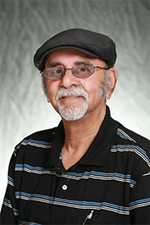
Subrata Dasgupta, Eminent Scholar Endowed Chair in Computer Science in the Center for Advanced Computer Studies, is a bi-cultural multidisciplinary scholar, scientist, and writer. A native of Calcutta, he was educated in England, India, and Canada. Dasgupta has been at UL Lafayette since 1982, was a founding faculty of the Center for Advanced Computer Studies in 1984, and was appointed to the Eminent Scholar Chair in 1993. He has also taught at Ohio State University, the University of Alberta and the University of Manchester Institute of Science and Technology. From 1999 to 2013 was the director of the Institute of Cognitive Science at UL Lafayette. From 1974 to 1991, Dasgupta's research spanned such branches of computer science as computer architecture, microprogramming, hardware description languages, program verification, and design theory. For the past quarter century, his focus has been on the historical and cognitive nature of creativity, especially in science, engineering and technology, art, design, and intellectual/cultural movements.
In addition to some 75 papers and articles, he is the author of seventeen books including, most recently, Awakening: The Story of the Bengal Renaissance (Random House India, 2010) – which was longlisted for the Vodafone Crossword Literary Prize for Nonfiction in 2011; It Began with Babbage: The Genesis of Computer Science (Oxford University Press, 2014) – which was a Choice "Outstanding Academic Title for 2014" selection in 2015; Computer Science: A Very Short Introduction (Oxford University Press 2016, a volume in their prestigious and best-selling 'Very Short Introductions' series) and the forthcoming The Second Age of Computer Science: From Algol Genes to Neural Nets (Oxford University Press, 2018).
He is also the author of three novels and a memoir called Salaam Stanley Matthews (Granta 2006). He and his work have featured in periodicals and newspapers in Britain, India, Canada and Spain, on BBC radio and television, and a number of online podcasts. Dasgupta received the UL Foundation Distinguished Professor Award in 1989. He was the recipient of the Phi Kappa Phi South Central Regional Scholar Award (2002) and the Albert Nelson Marquis Lifetime Achievement Award from the Marquis Who's Who Publications Board (2017).
Herman D. Hughes Distinguished Lecture
Re-Thinking STEM Outreach and Engagement:
Building STEM Out of School Time Capacity through Building Community
Calvin Mackie, Ph.D.
CEO, Channel ZerO Group, LLC
Senior Vice-President, Golden Leaf Energy, LLC
Executive Director, STEM NOLA
3:45 - 5:00
10 April 2018
Oliver Hall auditorium (room 112)
3:15 - 3:45
Reception -- meet and greet Dr. Mackie
Oliver Hall Lobby
About the speaker

Calvin Mackie, Ph.D., is an award winning mentor, inventor, author, former engineering professor, internationally renowned speaker, and successful entrepreneur. His message as a mentor, author, speaker, and entrepreneur continues to transcend race, gender, ethnicity, religion, and time.
A lifelong resident of New Orleans, Dr. Mackie graduated from high school with low test scores requiring him to undertake special remedial classes at Morehouse College. He completed his degree in Mathematics at Morehouse in 1990, graduating Magna Cum Laude and a member of the prestigious Phi Beta Kappa National Honor Society. He was simultaneously awarded a Bachelors degree in Mechanical Engineering from Georgia Tech, where he subsequently earned his Master's and Ph.D in Mechanical Engineering in 1996.
While pursuing his doctorate degree, he served as an instructor of mathematics at Morehouse College. Following graduation he joined the faculty at Tulane University, where he pursued research related to heat transfer, fluid dynamics, energy efficiency, and renewable energy. In 2002, he was promoted to Associate Professor with tenure. Mackie's eleven year academic career ended in June 2007, when Tulane University disbanded the engineering school in response to financial hardship induced by Hurricane Katrina. During 2004-2005 academic year, Mackie was a visiting professor in the Department of Chemical Engineering at the University of Michigan, where he performed research on fuel cells. He enjoyed a respected academic career, before refocusing his career on entrepreneurship, consulting and professional speaking.
Mackie has won numerous awards including the 2003 Presidential Award for Excellence in Science, Mathematics and Engineering Mentoring in a White House ceremony, the 2002 Black Engineer of the Year Award for College Level Educator, the 2002 New Orleans Data News Weekly Trailblazer Award, and the Pi Tau Sigma/ASME Excellence in Teaching Award in Mechanical Engineering for 2000 and 2002. Always harboring a passion for engineering, Mackie was awarded a patent on a device to retrofit luggage stowbins on 737 and 757 Boeing commercial airliners. Most recently, Dr. Mackie was awarded the highest honor bestowed upon a graduate of Morehouse College, A Candle in the Dark's "Bennie" Award for his many academic, professional, and entrepreneurial achievements, as well as receiving the United Negro College Fund's (UNCF) prestigious Legacy Award for his accomplishments in Leadership, Education, and Mentoring by encouraging students and/or colleagues to realize their potential, and help others to achieve their best.
Following the catastrophic Hurricanes Katrina and Rita in 2005, then Governor Kathleen Blanco appointed Dr. Mackie to the thirty-three member board of the Louisiana Recovery Authority (LRA), the guiding agency to lead the state's rebuilding efforts. In 2009, then Lt. Governor Mitch Landrieu appointed Dr. Mackie to the Louisiana Council on the Social Status of Black Boys and Black Men. The board elected Mackie to chair position where he is led the state's effort to create policy and programs to positively impact the quality of life for black males and families in the state of Louisiana. Most recently, Governor John Bel Edwards appointed Mackie to the Coastal Protection and Restoration Authority (CPRA). The CPRA was established as the single state entity with authority to articulate a clear statement of priorities and to focus development and implementation efforts to achieve comprehensive coastal protection for Louisiana.
Mackie is currently a partner and Senior Vice-President of Golden Leaf Energy (GLE). GLE is an innovative, renewable energy company that manufactures lubricants and methyl esters (biodiesel). Utilizing an integrated product development platform and industry leading production technology, GLE manufacturers and distributes renewable lubricants for drilling applications. Golden Leaf Energy also distributes quality methyl esters for a variety of other applications. GLE owns and operates a multi-feedstock biorefinery in located in southeast Louisiana.
Mackie continues in his role as President and CEO of the Channel ZerO Group LLC, an educational and professional development consulting company he co-founded in 1992. He has presented to numerous civic and educational institutions, government entities, professional association, and businesses of every size and industrial focus. Through his travels and online mentoring presence, Mackie reaches millions of students and professionals annually.
Most recently, Dr. Mackie founded STEM NOLA is a non-profit organization founded to expose, inspire and engage communities about the opportunities in Science, Technology, Engineering and Mathematics (STEM). STEM NOLA designs and delivers activities, programs and events that bring inspiration, motivation and training to all STEM stakeholders (especially students) across entire communities. Since December 2013, STEM NOLA has engaged over 13,000 most under-served K-12 New Orleans students in hands-on STEM project based activities. Over 80% of participants receive free or reduce lunch vouchers and thus free admission, and 45% have been females.
SIMM - March 2018
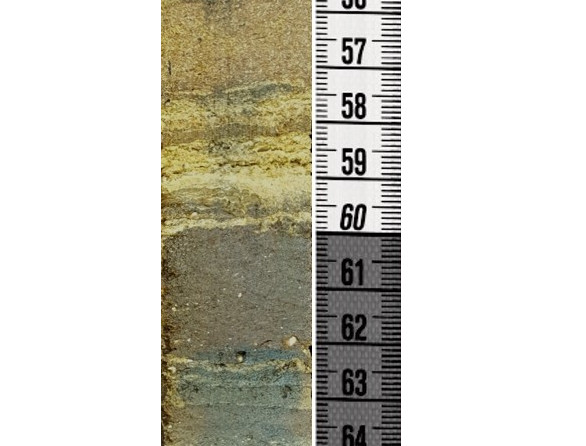
Climate and Anthropogenic Lake Sediment Records from China
Aubrey Hillman, School of Geosciences, UL Lafayette
3:30 - 5:00
Tuesday, 27 March 2018
Oliver Hall auditorium (room 112)
Abstract
Lake sediments can be used to reconstruct both natural climate variability and human-induced environmental changes. Quantifying the natural range of environmental parameters, such as precipitation or temperature, is becoming increasingly important as climate change alters lake ecosystems. Additionally, it is apparent in landscapes with long histories of human occupation that people have been measurably impacting ecosystems for far longer than just the period following the Industrial Revolution. Mitigating present-day environmental issues therefore relies on documenting the character, timing, and magnitude of anthropogenically-driven changes. While there are a variety of different analytical techniques that can be applied to achieve these aims, this talk will focus on the use of organic and inorganic carbon and nitrogen isotopes. Of particular focus will be an 8,600-year sediment record from Xingyun Lake in southwestern China, a region characterized by dramatic fluctuations in climate and presently facing water and sediment quality issues. This record will show that from 5,300 to 3,300 years before present, climate change associated with monsoon variability substantially lowered lake levels and increased lake productivity. After 3,300 years ago, several lines of evidence strongly suggest that increasing human settlement in the region pushed lake productivity even higher and caused cultural eutrophication. Future work is aimed at integrated these results with additional regional lake sediment records, but these results initially suggest that past environmental change has proceeded at a rapid rate and that human perturbation of natural lake ecosystems has been taking place for millennia.
About the speaker
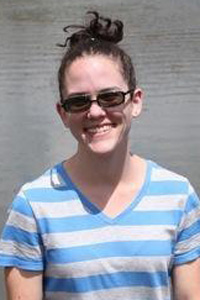
Aubrey Hillman received her BS in Environmental Science and her BA in Archaeology from the University of Maryland Baltimore Country and her MS and PhD in Geology from the University of Pittsburgh. After receiving her PhD she was awarded a post-doctoral fellowship at the Byrd Polar and Climate Research Center at The Ohio State University. Dr. Hillman joined the Environmental Science Department at UL Lafayette in 2017. Her research focuses on using lake sediment records to infer both naturally and anthopogenically driven environmental change over the last several thousand years with a particular focus on monsoonal regions such as Peru and China. Dr. Hillman frequently collaborates with archaeologists and historians to incorporate human-environmental interactions into her results.
Fall 2017
SIMM - November 2017
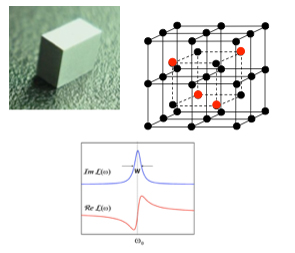
Acoustics: a powerful tool for materials exploration
Gabriela Petculescu, Department of Physics, UL Lafayette
3:30 - 5:00
Tuesday, 21 November 2017
Oliver Hall auditorium (room 112)
Abstract
The way sound propagates through a solid reveals fundamental properties about the crystal's structure itself. Acoustic techniques, adaptable and often nondestructive, are employed to understand phenomena such as magneto-elastic coupling in ferromagnets, phonon-blocking in thermoelectrics, phase transformations, etc. In this presentation, two ultrasonic techniques, the novel resonant ultrasound spectroscopy and the classical pulse-echo, will be described in relation to two specific applications. One is the increase in magnetostriction of Fe-based alloys due to small amounts of non-ferromagnetic solute elements (Ga, Al, Ge, Si) dissolved into the bcc alpha structure of iron. Elastic measurements allowed for an understanding of the alloys' global behavior in terms of their magnetoelastic coupling energy. A second case where sound may prove to be a key tool is the sensitization of 5xxx-series aluminum alloys. These materials are employed mainly in marine applications. They were successfully designed for low density and high strength, but when the alloy is exposed to environmental heat, the magnesium atoms in its composition (3-6 at.%) migrate and combine with aluminum in a new phase at the grain boundaries. The new phase is corrosive in salt water. Ultrasonic parameters (attenuation and wave speed) were found to change with the sensitization level in Al-Mg alloys. This correlation offers the potential for a new nondestructive tool to quantitatively monitor the sensitization level in Mg-rich aluminum alloys, an on-site alternative to the lengthy and destructive Nitric Acid Mass-Loss Test currently approved.
About the speaker
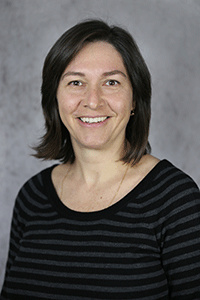
Gabriela Petculescu received her BS in Physics from the University of Bucharest, Romania, in 1995 and her PhD in Physics from Ohio University in 2002. After receiving her PhD she held a two year postdoctoral appointment at the National Center for Physical Acoustics in Mississippi followed by a two year postdoctoral appointment at Northwestern University in Illinois. Dr. Petculescu joined the Physics Department at UL Lafayette in 2006. She is currently an associate professor of physics.
Dr. Petculescu's research focus centers on the interface between physical acoustics and material science. In particular, she uses ultrasonic techniques to understand properties of materials and their potential applications.
SIMM - October 2017

Secure Semantic Search over Encrypted Big Data in the Cloud
Mohsen Amini, Center for Advanced Computer Studies, UL Lafayette
3:30 - 5:00
Tuesday, 17 October 2017
Oliver Hall auditorium (room 112)
Abstract
Cloud storage is a widely utilized solution for both personal and enterprise demands. However, despite its advantages, many potential users with enormous amount of sensitive data (big data) refrain from fully utilizing the service due to valid concerns about data privacy. An established solution to the privacy problem is to perform data encryption on the client-end. This approach, however, restricts big data processing capabilities (e.g., searching over the data). In particular, searching semantically with real-time response is of interest to clients with big data. To provide the semantic search ability, we introduce an system (termed S3BD) for searching big data using cloud services without exposing any data to cloud providers. To keep real-time response on big data scale datasets, S3BD limits the search to a subset of the whole dataset. For that purpose, we propose a method to cluster the encrypted data based on topic similarity. An abstract of each cluster is maintained on the client-end to navigate the search operation to appropriate clusters at the search time. Results of experiments, carried out on real-world big datasets, demonstrate that the search operation can be achieved in real-time and is significantly more efficient than other counterparts. In addition, a fully functional prototype of S3BD is made publicly available.
About the speaker
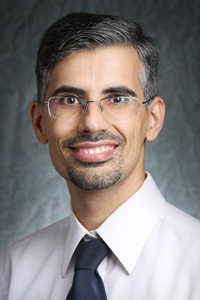
Mohsen Amini Salehi received his BS degree in Software Engineering from Azad University of Mashhad in 2003. He started his research on Distributed Computing through his Master's thesis at Ferdowsi University of Mashhad, Iran, in 2006. He continued his research during his Ph.D. in Computing and Information Systems at Melbourne University, Australia, until 2012. He has been a postdoctoral associate in the same area of Distributed and Cloud Computing at Colorado State University and University of Miami, from 2012 to 2014. He is currently an Assistant Professor and director of the High Performance Cloud Computing (HPCC) laboratory, School of Computing and Informatics (CMIX), at UL Lafayette. His current research focus is on heterogeneity, fog computing, resource allocation, and security in Cloud environment . You can find more information about Dr. Amini at his homepage
SIMM - September 2017
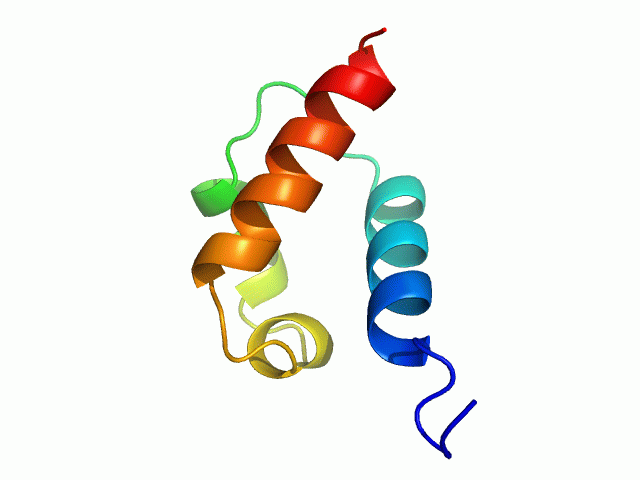
Development of a Tool for Accurate Comparison of Protein 3-D Structures
Wu Xu, Department of Chemistry, UL Lafayette
3:30 - 5:00
Tuesday, 19 September 2017
Oliver Hall auditorium (room 112)
Abstract
Protein sequence and structure data are becoming rapidly and increasingly available. Both sequence and structure information play important roles in understanding protein functions. It is well accepted that protein structures are more conserved than sequences. Understanding 3-D structure relationship provides deeper insights on protein functions than pure 1-D sequence relationship. However, detecting protein geometry relationship is far more uncertain than identifying sequence relationships. Challenges in quantifying structures have resulted in a large number of approaches to this problem described in the literature over the last thirty years. Many automated methods have been developed using different representations of structure, similarity measurements and optimization algorithms. The methods developed for protein structure comparison or alignment can be divided into four categories: sequence-, distance-, secondary structure- and geometry-based approaches at either local or global structure levels. There are limitations in all existing methods. We have been developing a tool for protein 3-D comparison that is based on mapping triples of atoms into spatial triangles, and converts atom types and geometry of a triangle into features. It is a completely different approach and no similar method exists in the field. We have demonstrated that our method can be employed for protein local and global structural comparisons.
About the speaker
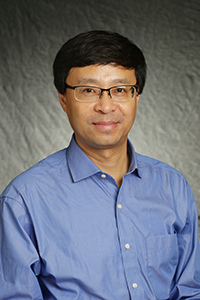
Wu Xu received a BS from Beijing Agriculture University, a MS from Institute of Genetics, Chinese Academy of Science, a second MS in Bioinformatics and Computational Biology, and a Ph.D. in Biochemistry from Iowa State University. After graduated from Iowa State University, he did his post-doctoral training in the Department of Biochemistry at St. Jude Children’s Research Hospital for four and half years. He came to the Department of Chemistry at UL Lafayette in 2006 as an Assistant Professor. Dr. Xu has been working on protein structure and function relation since he was a graduate student at Iowa State University. He is also interested in integrating computational and theoretical calculations with experimental data for meaningful interpretation of protein functions.
Spring 2017
SIMM - April 2017
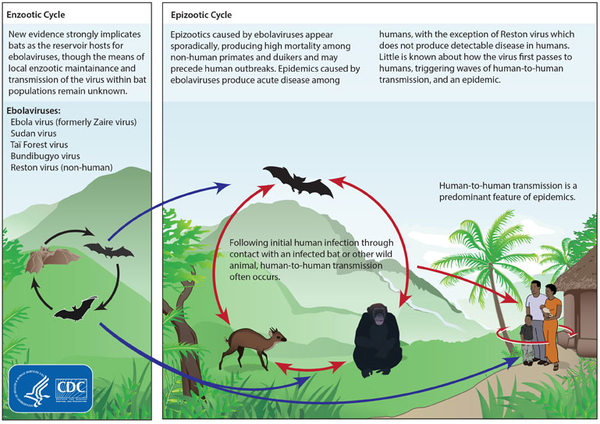
Mathematical modeling of infectious diseases: from Ebola outbreaks to HIV immunology
Cameron Browne, Department of Mathematics, UL Lafayette
3:30 - 5:00
Tuesday, 25 April 2017
Oliver Hall auditorium (room 112)
Abstract
Infectious diseases are of central concern to society, and mathematics can be applied to better understand their dynamics and evolution. Mathematical models can describe the spread of a pathogen in a population of susceptible individuals, or (on the smaller scale) in a population of cells within an infected individual. Analysis of models may elucidate these complex biological systems, providing thresholds for different dynamical behaviors. Furthermore, mathematical modeling can be utilized with data to quantify and project trends in the relevant populations, although some predictions should be taken with a grain of salt. In this talk, I will discuss some current research on the two different scales of infection.
First, I consider recent work about modeling the 2014-2015 Ebola outbreak in West Africa. Mathematical modeling of the Ebola outbreak gained public notoriety with some dire projections, which turned out to be quite inaccurate. In joint work with colleagues, we focused on modeling complex control strategies, such as contact tracing, and assessing their impact on the epidemic reproduction number using data and mathematical analysis. Next, I turn to HIV infection within a host. Mathematical modeling has contributed to HIV research over the past few decades, for example, in quantifying high viral replication and evolution during chronic infection. The battle between the rapidly evolving virus and diverse immune system forms a complex network. In current work, I am modeling how HIV escapes the immune response, and attempting to explain some virus-immune dynamical patterns observed in different datasets from HIV and SIV infection.
About the speaker

Cameron Browne joined the UL Lafayette faculty in 2015 as assistant professor in the Department of Mathematics. He received his B.S. from University of Florida (2007), and went on to obtain his PhD in mathematics from University of Florida (2012). He has held postdoctoral positions at University of Ottawa (2012-2013) and at Vanderbilt University (2013-2015). His research interests are in Mathematical Biology, Mathematical Modeling, Differential Equations and Dynamical Systems.
SIMM - March 2017
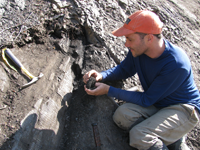
Reconstructing seasonality using stable isotope measurements in tree rings
Brian Schubert, School of Geosciences, UL Lafayette
3:30 - 5:00
Tuesday, 21 March 2017
Oliver Hall auditorium (room 112)
Abstract
Workers have long used ring-to-ring records of natural abundance stable isotope ratios (delta13C) to interpret annual climate trends and variability across multiple consecutive years. More recently, researchers have improved upon single-ring measurements of (delta13C) by developing a variety of methods for subsampling across single tree rings, including hand-slicing, microtome sectioning, and laser ablation. This work has revealed large-scale changes in (delta13C) value within each growth ring that relate to changes in seasonal hydrology, specifically the ratio of summer to winter precipitation. Here I will present high-resolution (delta13C) data on fossil wood collected from across the Arctic in order to reconstruct year-to-year changes in seasonal precipitation. Determination of seasonal precipitation represents a critical advance beyond the reconstruction of mean annual conditions, particularly in assessing the influence of climate on vegetation. Results from this work suggest that the Eocene Arctic experienced consistently wet summers, whereas the Miocene Arctic experienced high variability in seasonal precipitation. We attribute these changes in seasonal precipitation to changes in Arctic sea ice cover during the Cenozoic, and suggest that seasonal precipitation carries significant ramifications for primary productivity within Arctic regions.
About the speaker
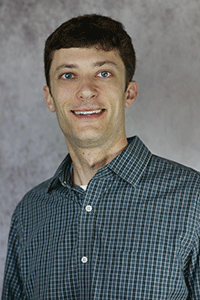
Brian Schubert has been an Assistant Professor at the University of Louisiana at Lafayette since 2013. He received his Bachelor of Science from Lafayette College, his PhD from Binghamton University, and was a postdoctoral research scientist at the University of Hawaii. Dr. Schubert heads the stable isotope lab in the School of Geosciences where he studies chemical changes in modern and fossil organic matter. He has conducted fieldwork in Ireland, California, Hawaii, and across the Arctic – including Alaska, northern Canada, and Siberia.
February 2017
Inaugural Herman D. Hughes Distinguished Lecture
The first SIMM of the spring semester will be held in March. However, we have a special treat for February as we kick-off the Herman D. Hughes Distinguished Lecture Series.
Reflections: Research Activities Involving High-Speed and Wireless Networks
Herman D. Hughes, Professor Emeritus of Computer Science & Engineering
Michigan State University
3:30 - 5:00
14 February 2017
Oliver Hall auditorium (room 112)
Abstract
A brief description of the speaker's journey as a student, attending HBCU's to becoming a professor of computer science and engineering will be highlighted. Some emphasis will be placed on the Wireless and High-Speed research Laboratory (spearheaded by the Speaker) and its involvement in several activities. However, the primary focus of the talk will be centered around prior research on quality-of-service issues related to the transport of video traffic over ATM (autonomous transfer mode) Networks, Wireless ATM Networks, Wireless Ad Hoc Networks, and Network Workshops for Computer Science Professors from across the U.S.
About the speaker
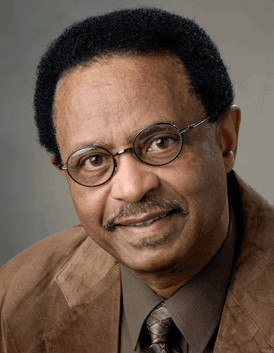
Dr. Herman D. Hughes (Doctor of Philosophy, Computer Science, 1973). Professor Emeritus at Michigan State University (Department of Computer Science and Engineering).
Dr. Herman D. Hughes, received a B.S. degree in Mathematics from Stillman College, a M.A. degree in Chemistry from Tuskegee University, and a Ph.D. in Computer Science from the University of Louisiana at Lafayette. He began his academic career as a high school mathematics teacher in 1959, followed by faculty positions in mathematics at Tuskegee University and Grambling State University. During his academic training, Professor Hughes worked in the summer months both in industry and government (IBM, American Oil Company, Dow Chemical, Advanced Avionics Research Lab). In 1973, Dr. Hughes joined the faculty of Michigan State University (MSU) as an Assistant Professor in the Department of Computer Science and Engineering. He climbed the academic ranks at MSU to become a Full Professor in 1984 and Professor Emeritus in 2005. While at MSU he also served as Assistant Dean of the Graduate School from 1986 through 1991.
Dr. Hughes became a national and international leader in the area of network traffic management and modeling with respect to wireless and high speed networks.
He designed several schemes for addressing quality-of-service issues central to recent network technologies, wireless ad hoc networks and Asynchronous Transfer Mode (ATM). The results of his research provided important insight for defining some key algorithms and parameters used by researchers for studying network traffic.
Dr. Hughes' work is published in numerous journals and has been presented at the most prestigious conferences. He served as a National ACM lecturer, and was voted Distinguished Alumnus both by Stillman College and the University of Louisiana at Lafayette. Professor Hughes' exemplary contributions to research, teaching and service earned him the MSU "Distinguished Faculty Award" in 2000.
Dr. Hughes' most recent research emphasis is quality-of-service (QoS) issues in mobile ad-hoc networks (MANET). Specifically, he has developed and published several
techniques and routing schemes designed to enhance QoS. From this work, he upgraded the high-speed networks and performances (HSNP) research lab to a modern wireless communication and high speed networks (WCHSN) lab.
After his retirement from MSU Professor Hughes relocated to Georgia. He was appointed an Adjunct Professor in the Department of Electrical and Computer Engineering at the Georgia Institute of Technology where he is involved in research and consulting. He is affiliated with Georgia Centers for Advanced Telecommunications Technology, housed in the School of Electrical and Computer Engineering.
Fall 2016
SIMM - November 2016

One phrase, two meanings: phytoplankton blooms in the coastal ocean
Beth Stauffer, Department of Biology, UL Lafayette
3:30 - 5:00
Tuesday, 15 November 2016
Oliver Hall auditorium (room 112)
Abstract
Phytoplankton are the dominant primary producers in oceanic, lake, and coastal ecosystems, contributing approximately 40% of total carbon fixation on the planet and more than half of the oxygen in Earth’s atmosphere. In many parts of the ocean and for most periods of each year, highly diverse phytoplankton communities function as the base of aquatic food webs. These communities often undergo a spring “bloom” event, much like the greening of our terrestrial landscapes, which support productive food webs and fisheries throughout the world’s ocean. However, coastal phytoplankton communities can also “bloom” in a less productive fashion; these harmful algal blooms (HABs) have deleterious effects on food webs and higher animals (including humans) and appear to be increasing in both frequency and magnitude. This talk will explore the underlying causes of both types of blooms, compare their effects, and introduce some of the outstanding questions that new technologies are allowing us to begin asking.
About the speaker
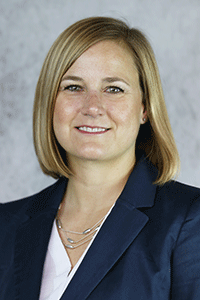
Beth Stauffer joined the UL Lafayette faculty in January 2016 as an Assistant Professor in the Department of Biology. Beth earned her Bachelors of Science in Marine Science and Biology from the University of Miami (Go Canes!) and was awarded her PhD in Marine Environmental Biology from the University of Southern California. Prior to joining the UL Lafayette faculty, she was a Lamont-Doherty Postdoctoral Fellow at Lamont-Doherty Earth Observatory of Columbia University and a AAAS Science & Technology Policy Fellow at the U.S. Environmental Protection Agency in Washington DC. Her research interests include phytoplankton ecology, biological oceanography, environmental technology, and water quality issues in coastal areas.
SIMM - October 2016
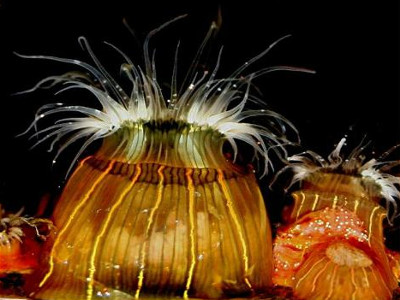
The Evolution of Deafness
Glen Watson, Department of Biology, UL Lafayette
3:30 - 5:00
Tuesday, 18 October 2016
Oliver Hall auditorium (room 112)
Abstract
Hair cells are specialized for a mechanoreceptor function. Hair cells are critical to our ability to hear and maintain balance. In fish, hair cells in the lateral line system allow the fish to school and to orient in current. In sea anemones, hair cells are employed to detect swimming movements of nearby prey. Overstimulation of hair cells can result in lethal damage to hair cells in vertebrate animals. In anemones, overstimulation of hair cells activates a robust repair mechanism that depends in part on secreted proteins and protein complexes. Unfortunately, hair cells in vertebrate animals are less well protected by repair mechanisms leaving them vulnerable to succumb to damage after overstimulation. In mammals, lost hair cells are not replaced, leading to permanent sensory deficits. Interestingly, exogenously supplied 'repair proteins' from anemones can be used to treat experimentally traumatized hair cells in fish and in mammals. Such treatments result in significant recovery of the traumatized vertebrate hair cells. The therapeutic potential of anemone repair proteins will be discussed.
About the speaker
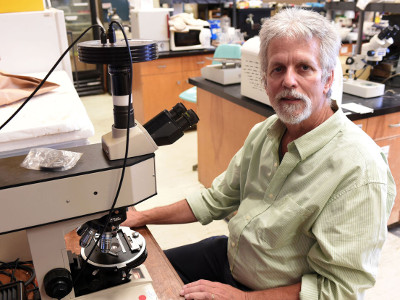
Glen Watson has investigated the sensory cell biology of sea anemones since 1984. He received a BS in Zoology from the University of Georgia, and a MS and PhD in Biology from Florida State University. Post-doctoral training was completed at the University of California, Riverside and at Loma Linda University School of Medicine. He came to UL Lafayette in 1989 as an Assistant Professor of Biology. Dr. Watson was Head of the Department of Biology from 2009-2012. Currently, Dr. Watson serves in the capacity as an Associate Dean in the College of Sciences and a Professor in the Department of Biology.
SIMM - September 2016
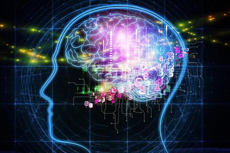
Be Careful: I can Read your Mind
Magdy A. Bayoumi, Center for Advanced Computer Studies, UL Lafayette
3:30 - 5:00
Tuesday, 20 September 2016
Oliver Hall auditorium (room 112)
Abstract
This is one of the ultimate goals of the "Brain Initiative" which may be real by 2030. In general to be able to control our surrounding world by the power of our mind, to control the artificial limbs by our thoughts, and to read people's brain is a dream and it is an exciting one.
Brain Computer/Machine Interface (BCI/BMI) is one of the enabling technology towards these goals. We have designed and developed BCI chips that can overcome the main challenges of interfacing with human brain, mainly: low bandwidth communication, small chip area, low power and low heat dissipation, and tolerant to noise. This new chip is based on spike sorting. It is implemented in 0.5 um CMOS technology. Probably, the more reflective title of this talk is "Brain on Silicon". Finally, a case study of early prediction, warning, and detection of an epileptic seizure using the developed chip will be illustrated.
About the speaker
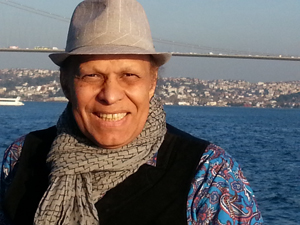
Magdy A. Bayoumi is the Z.L. Loflin Eminent Scholar Endowed Chair Professor at The Center for Advanced Computer Studies (CACS), University of Louisiana at Lafayette. He was the Director of CACS, 1997-2013 and Department Head of the Computer Science Department, 2000-2011. Dr. Bayoumi has been a faculty member in CACS since 1985. He received a B.Sc. and M.Sc. in Electrical Engineering from Cairo University, Egypt; a M.Sc. in Computer Engineering from Washington University, St. Louis; and a Ph.D. in Electrical Engineering from the University of Windsor, Canada.
Bayoumi is an IEEE Fellow. He has served in many capacities in the IEEE Computer, Signal Processing, and Circuits & Systems (CAS) societies. Currently, he is the vice president of IEEE RFID council and he is on the IEEE RFID Distinguished Lecture Program (DLP). Bayoumi received the IEEE CAS Education award and the IEEE CAS Distinguished Service award. He was on the IEEE DLP programs for CAS and Computer societies. He was on the IEEE Energy and Telecommunications committees. He was on the IEEE Fellow Selection Committee. Bayoumi has been an ABET evaluator and he was an ABET commissioner and team chair. He has been Guest Editor (or Co-Guest Editor) for many Special Issues, the latest was on Machine to Machine Interface. He has given numerous keynote/invited lectures and talks nationally and internationally. Bayoumi is the general chair of IEEE ICASSP 2017 in New Orleans. He has chaired many conferences including the first International Conference in Micro electronics to be held in Lafayette in 1994.
Bayoumi was the chair of an international delegation to China, sponsored by People-to-People Ambassador, 2000. He received the French Government Fellowship, University of Paris Orsay, 2003-2005 and 2009. He received the United Nation Fellowship, Egypt, 2002-2003. He was a Visiting Professor at King Saud University. He was an advisor to many departments in several countries.
Bayoumi was on the State of Louisiana Comprehensive Energy Policy Committee. He was the vice president of Acadiana Technology Council. He was on the Chamber of Commerce Tourism and Education committees. He was a member of several delegations representing Lafayette to international cities. He was on the Le Centre International Board. He was the general chair of SEASME (an organization of French Speaking cities) conference in Lafayette.
